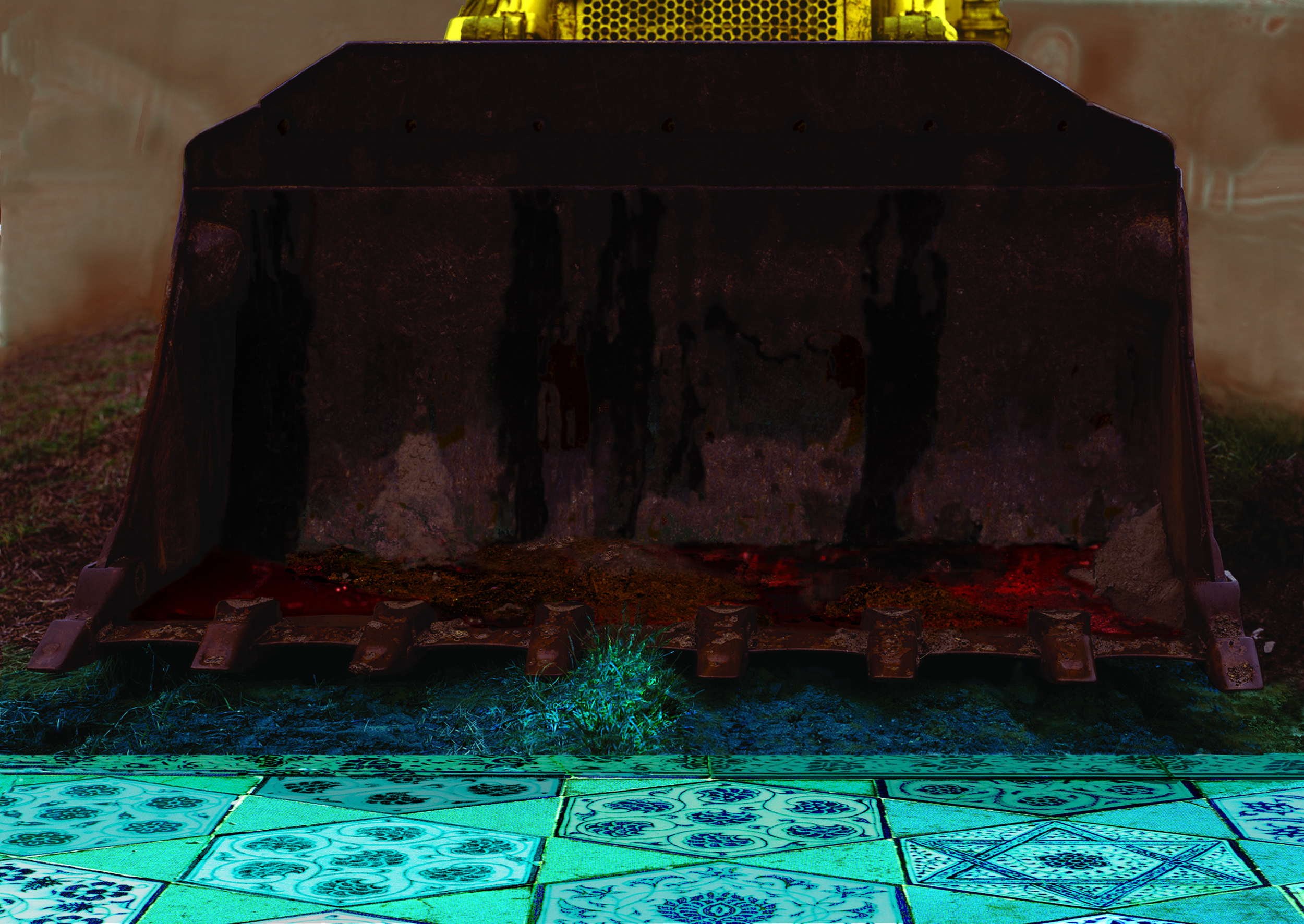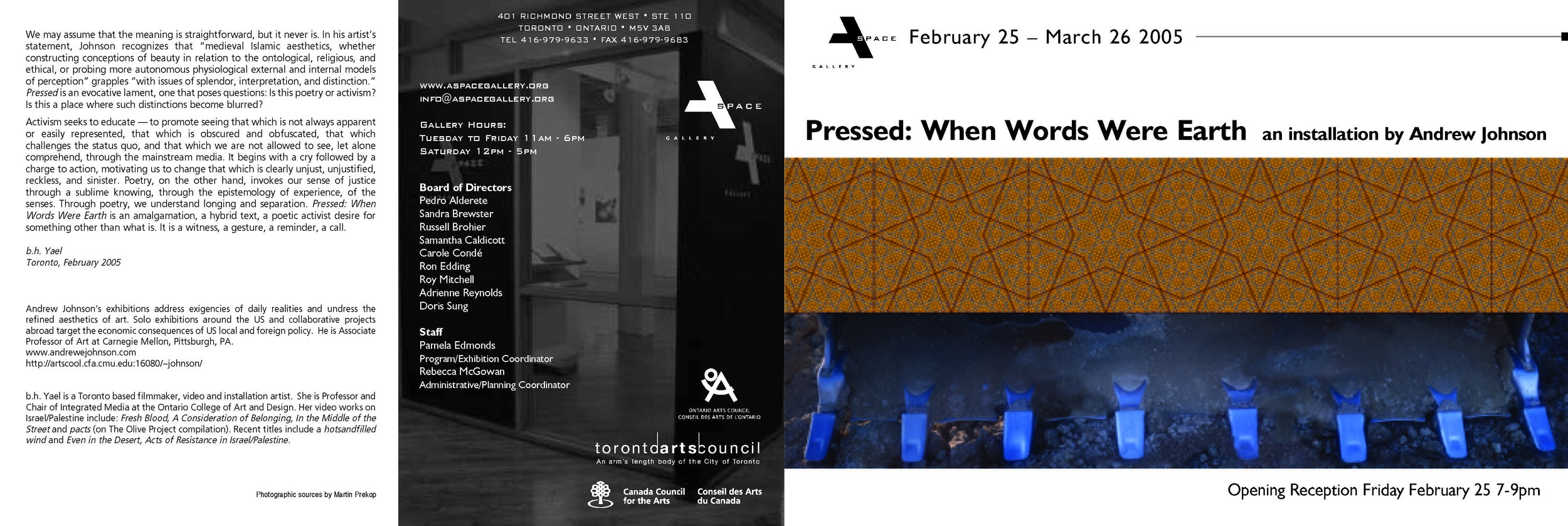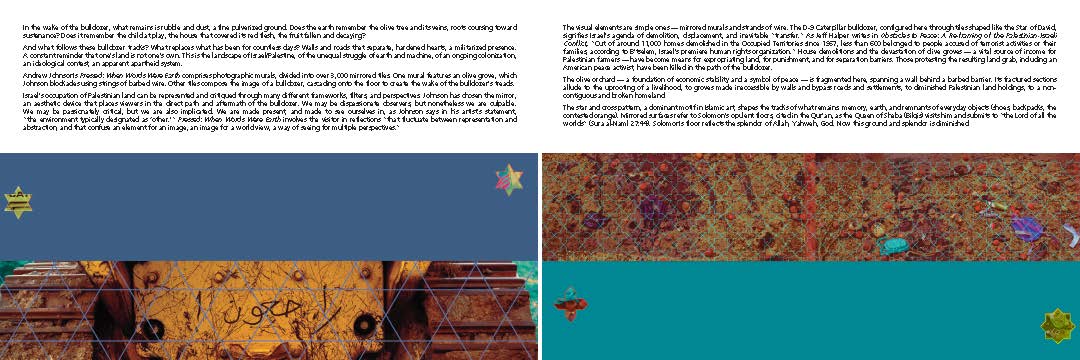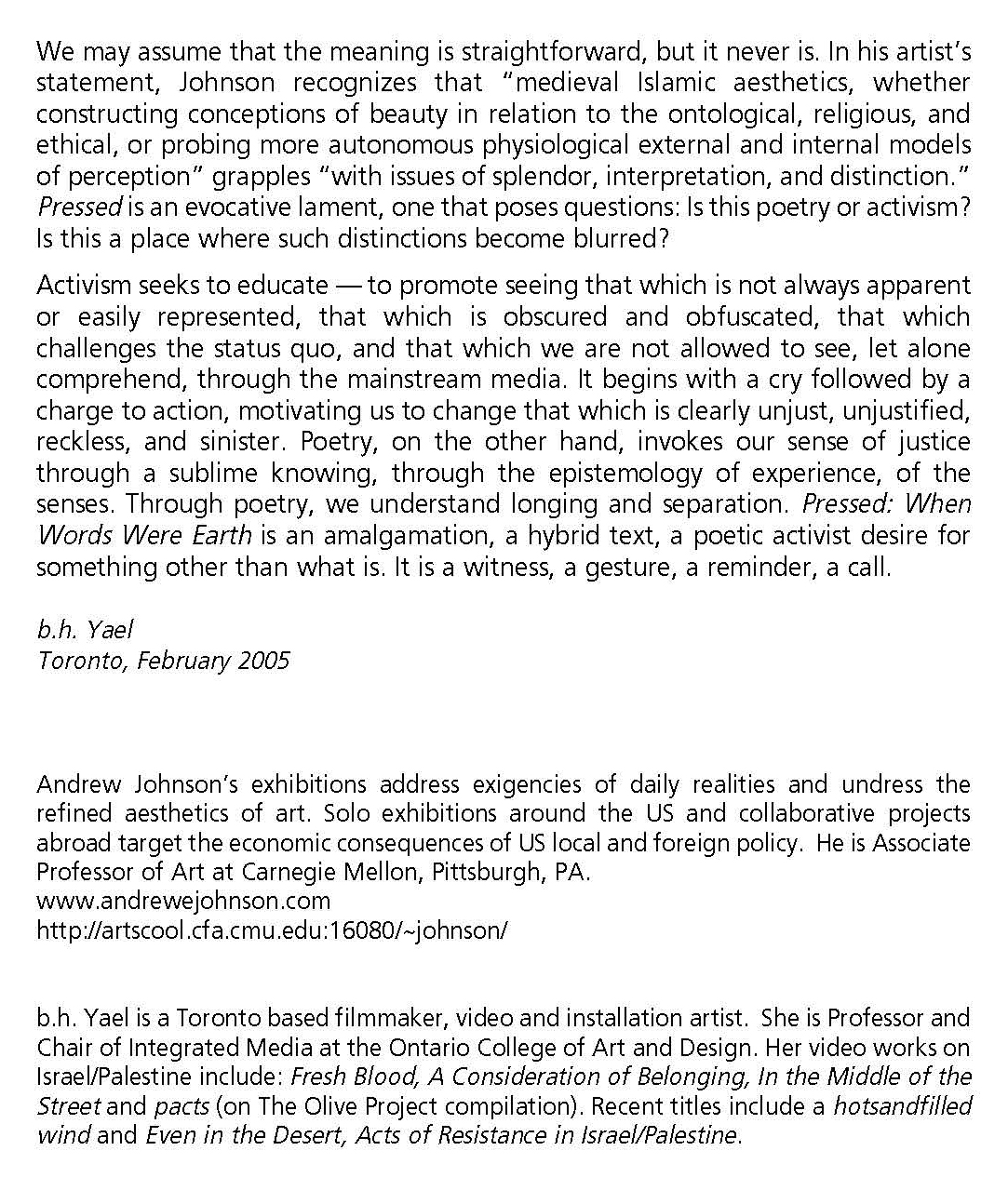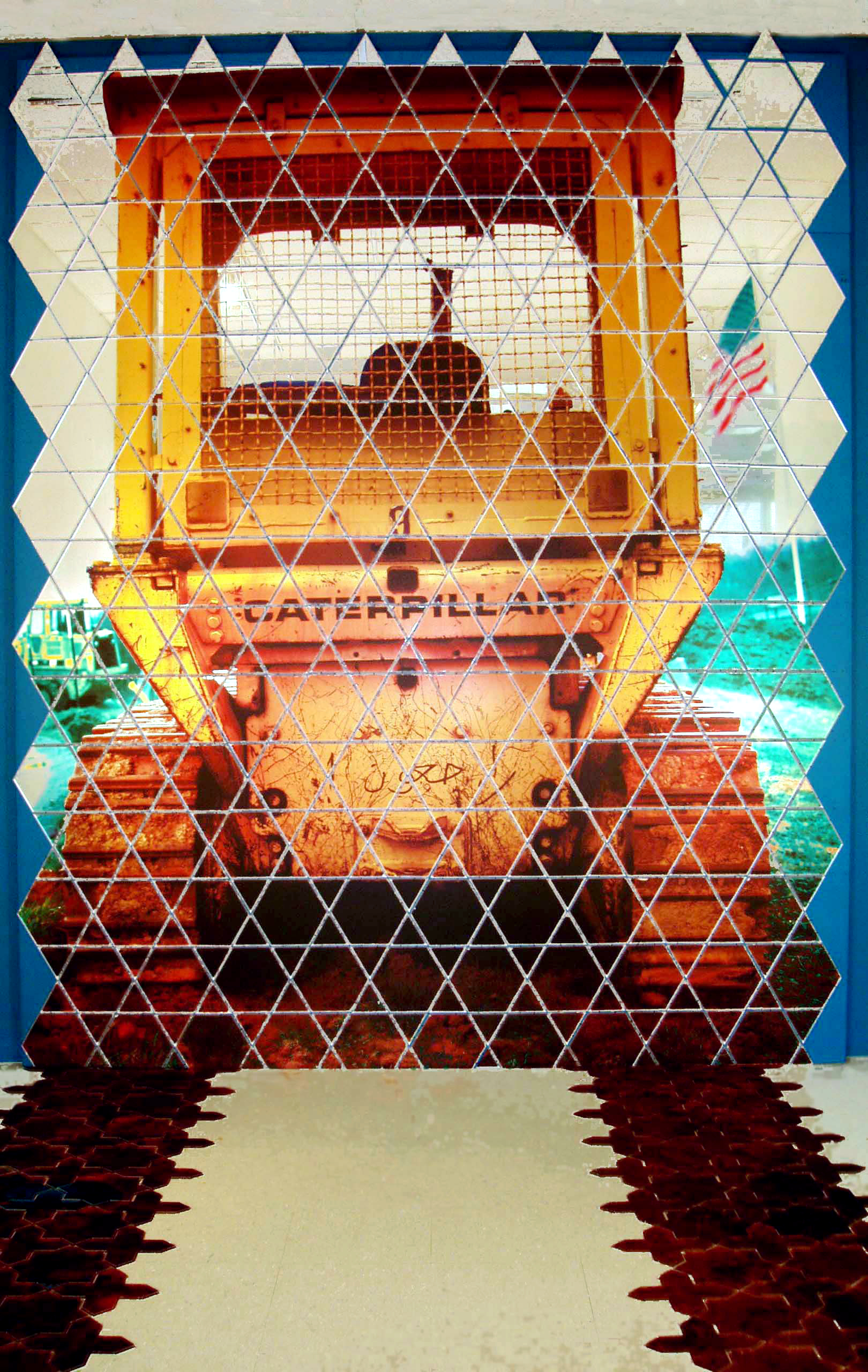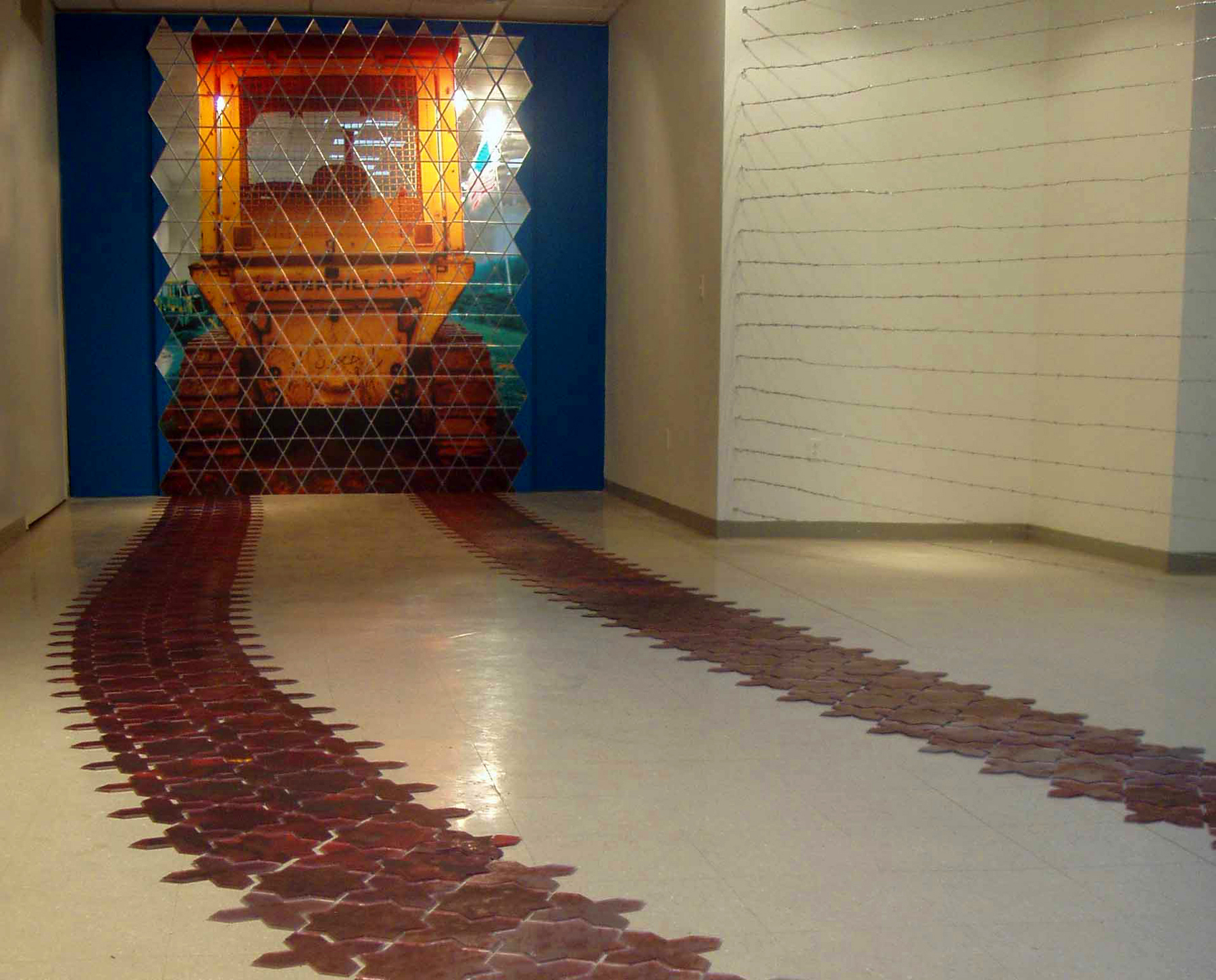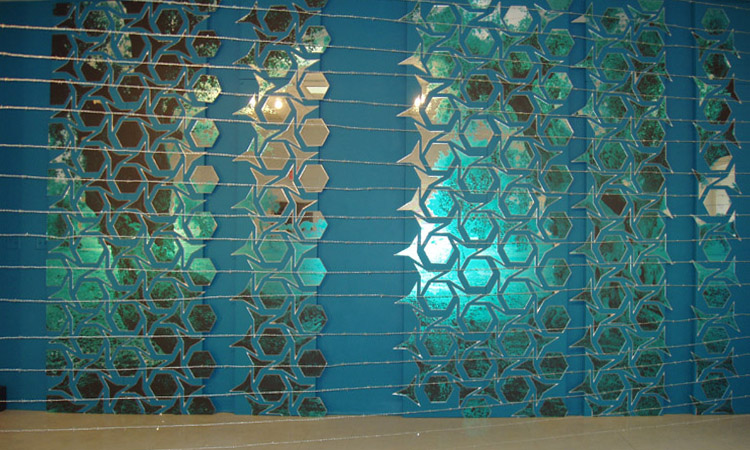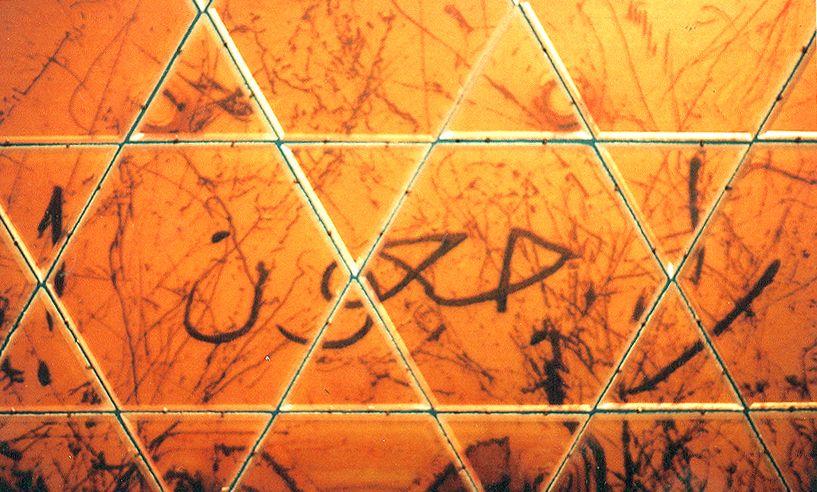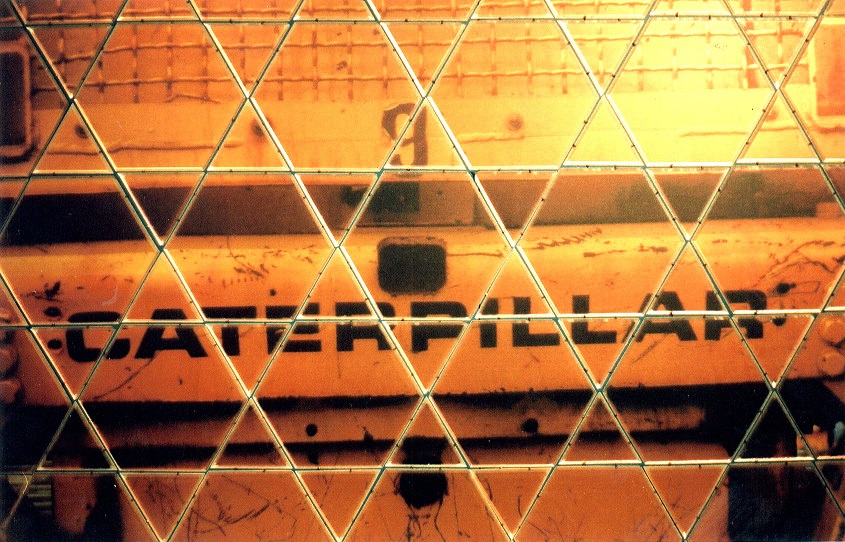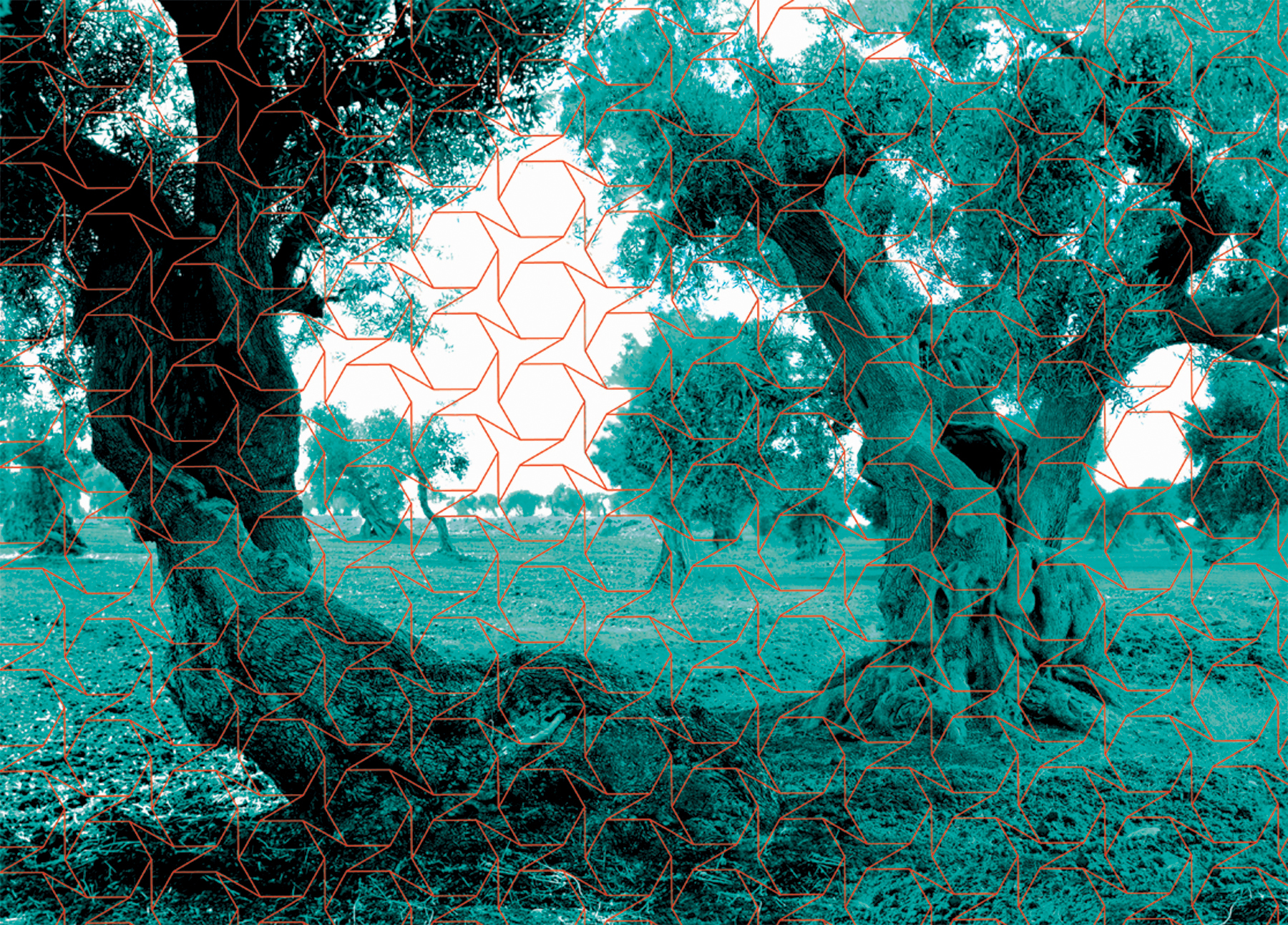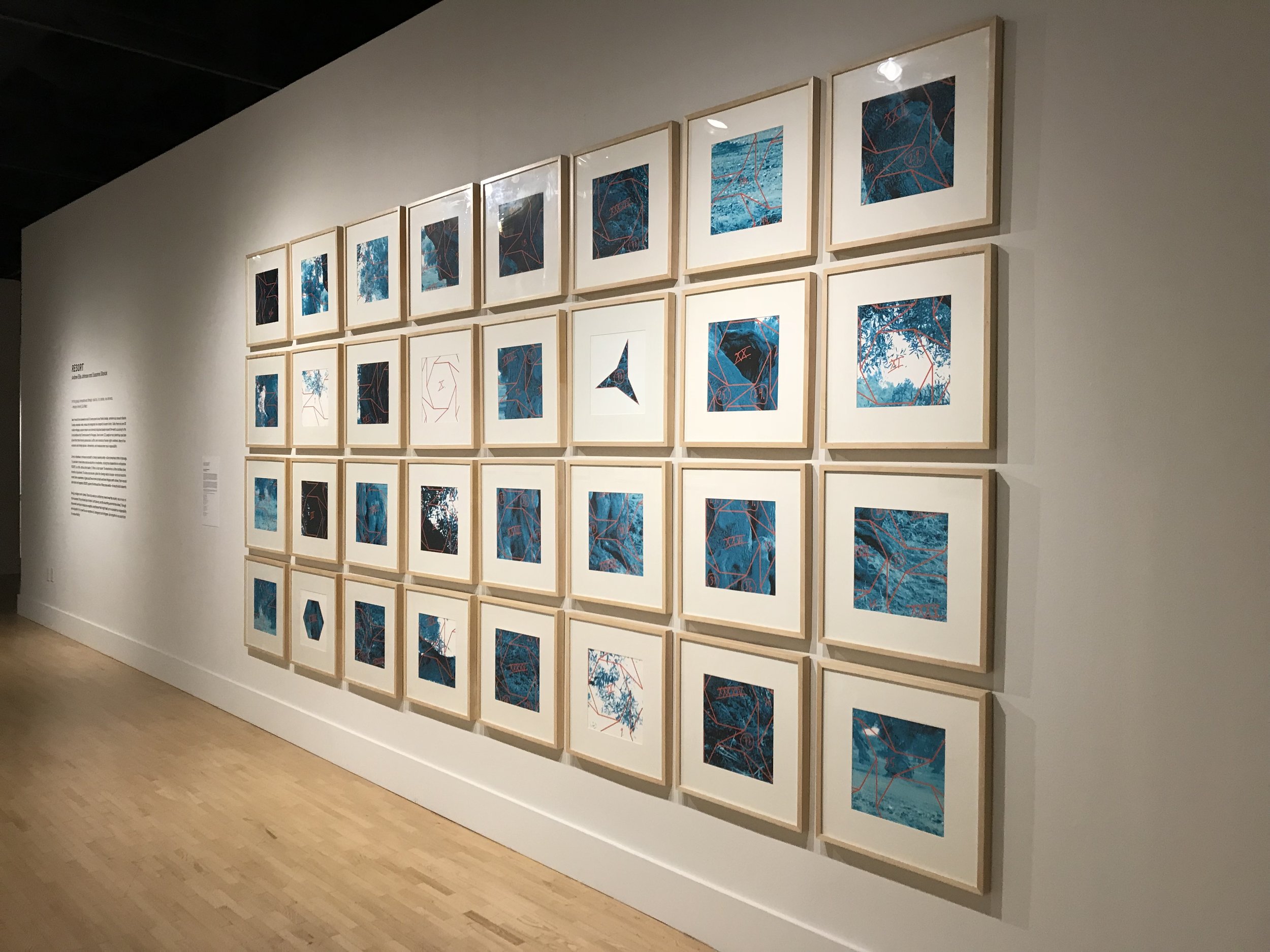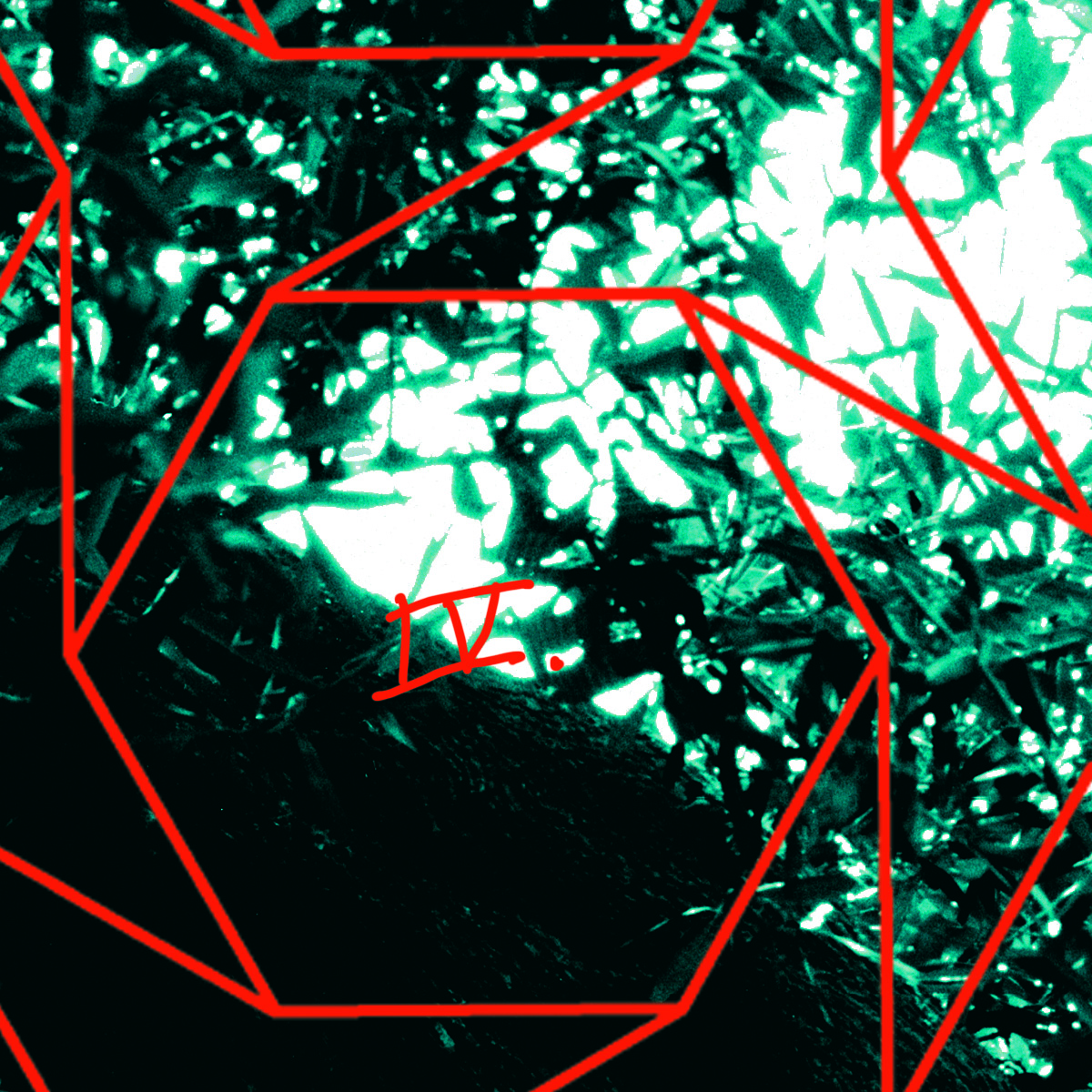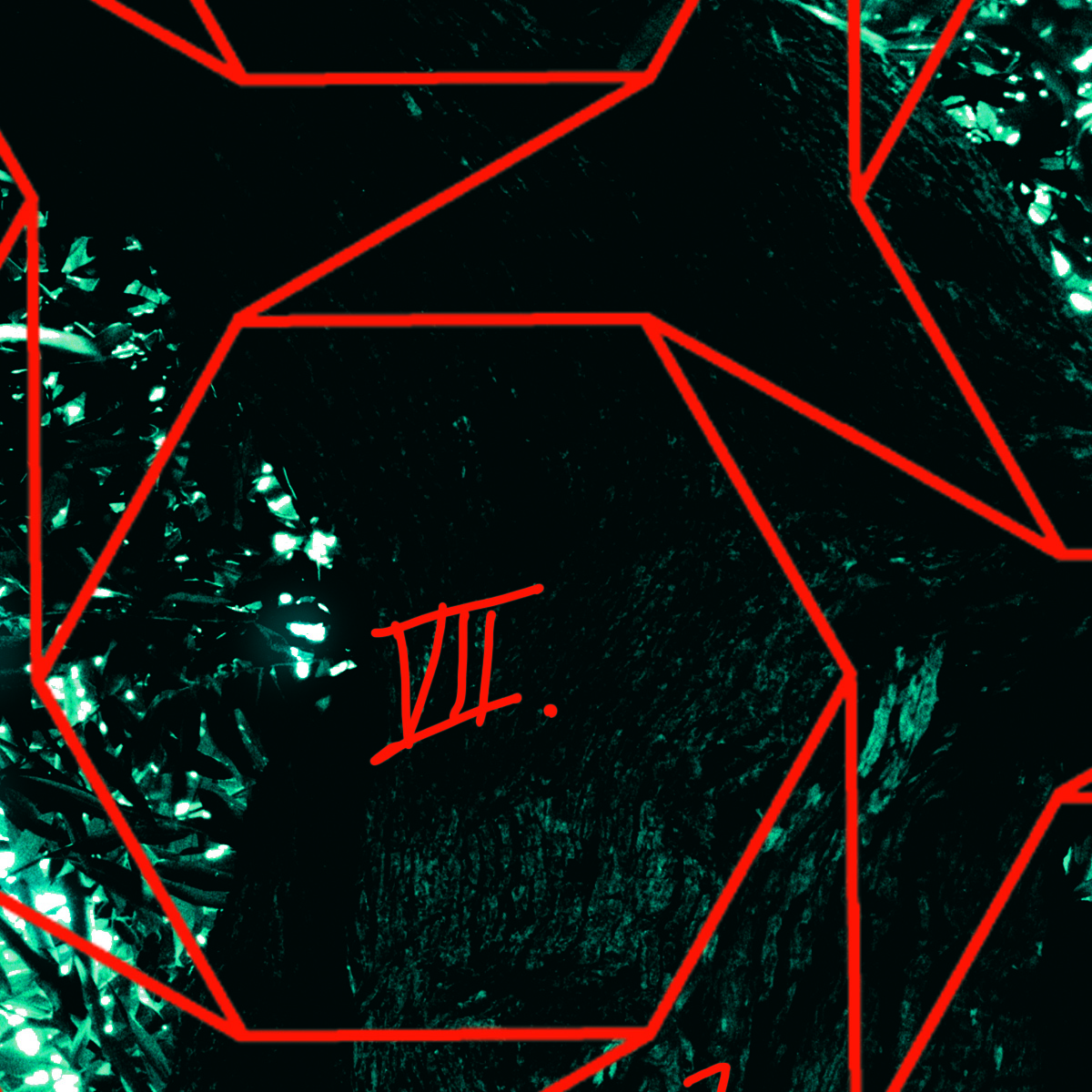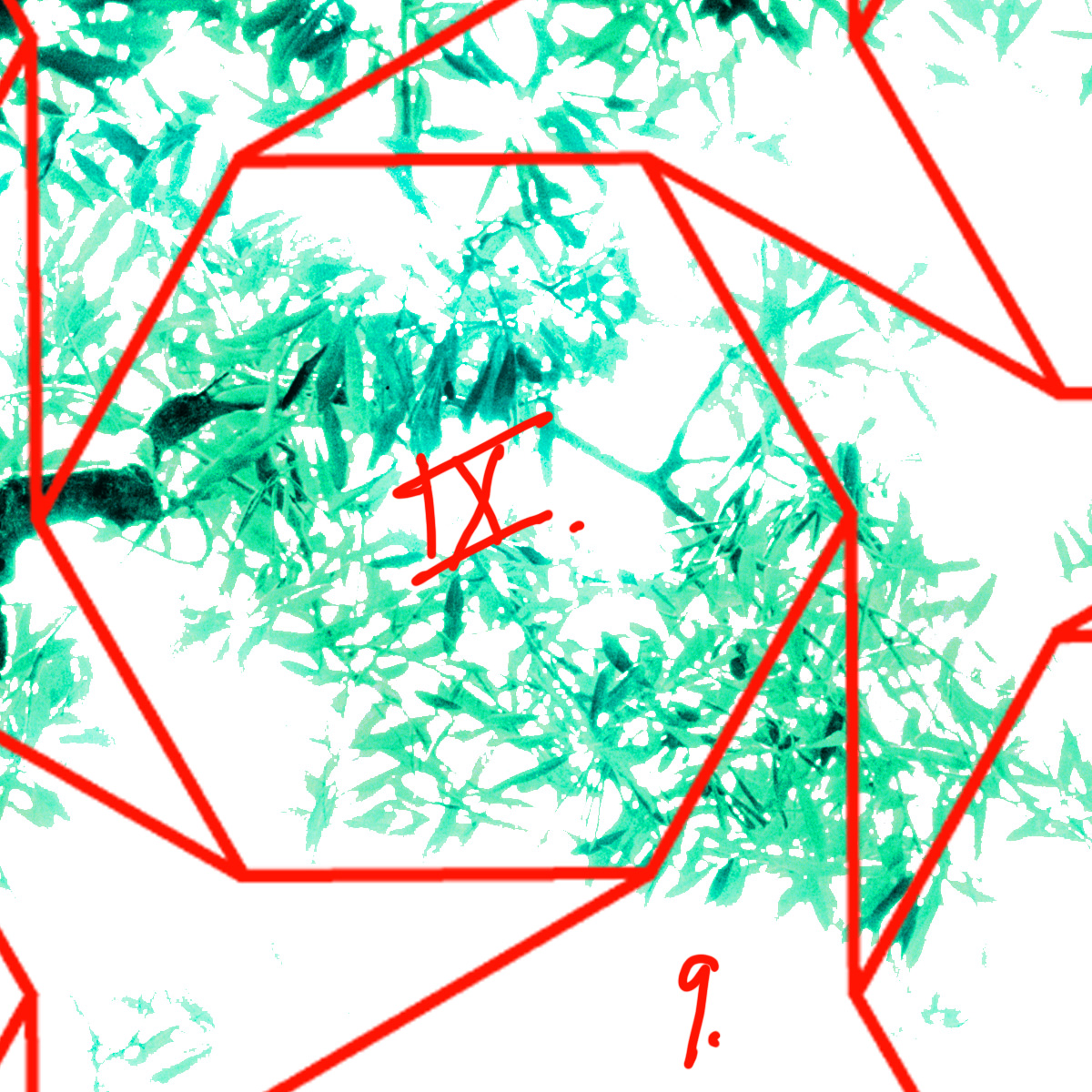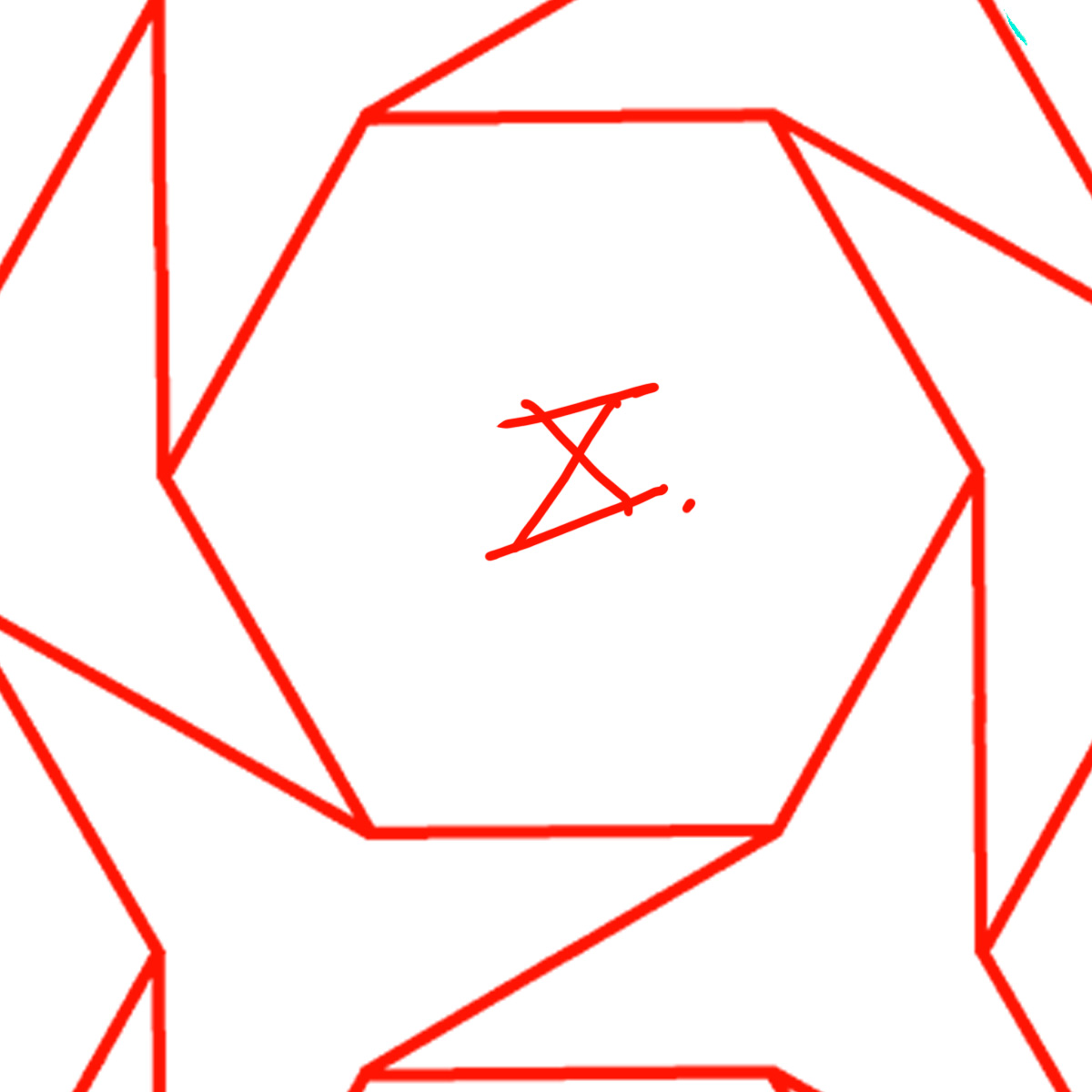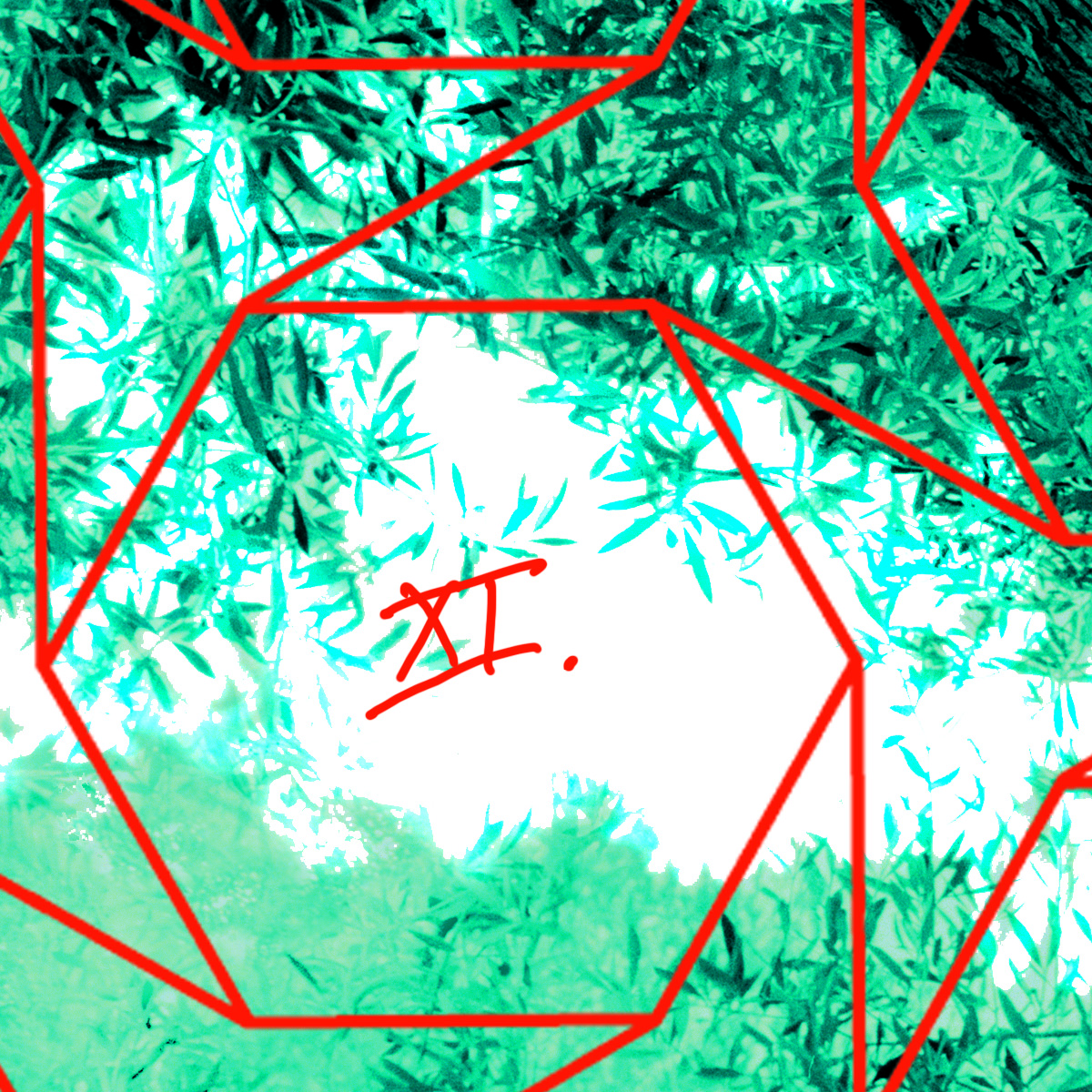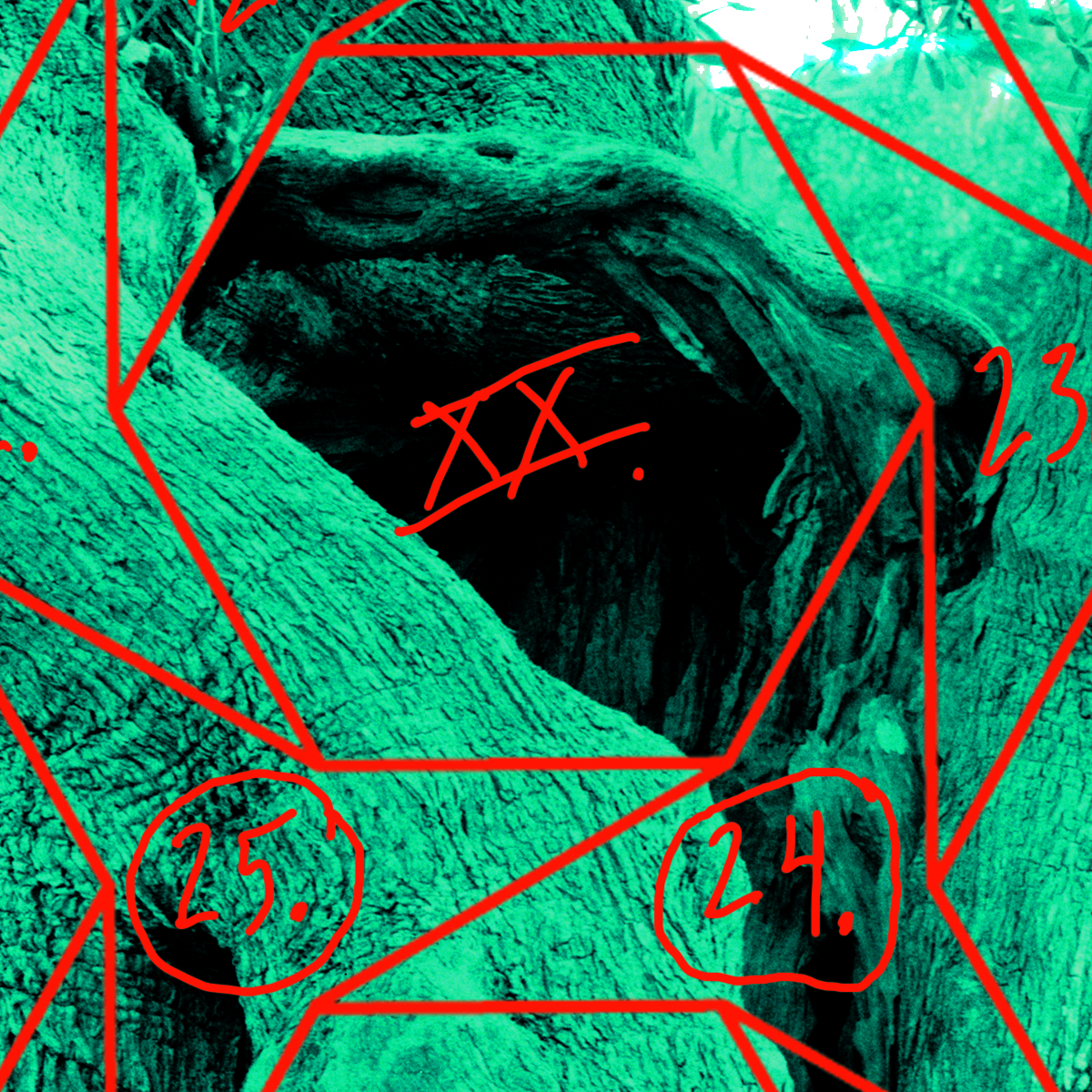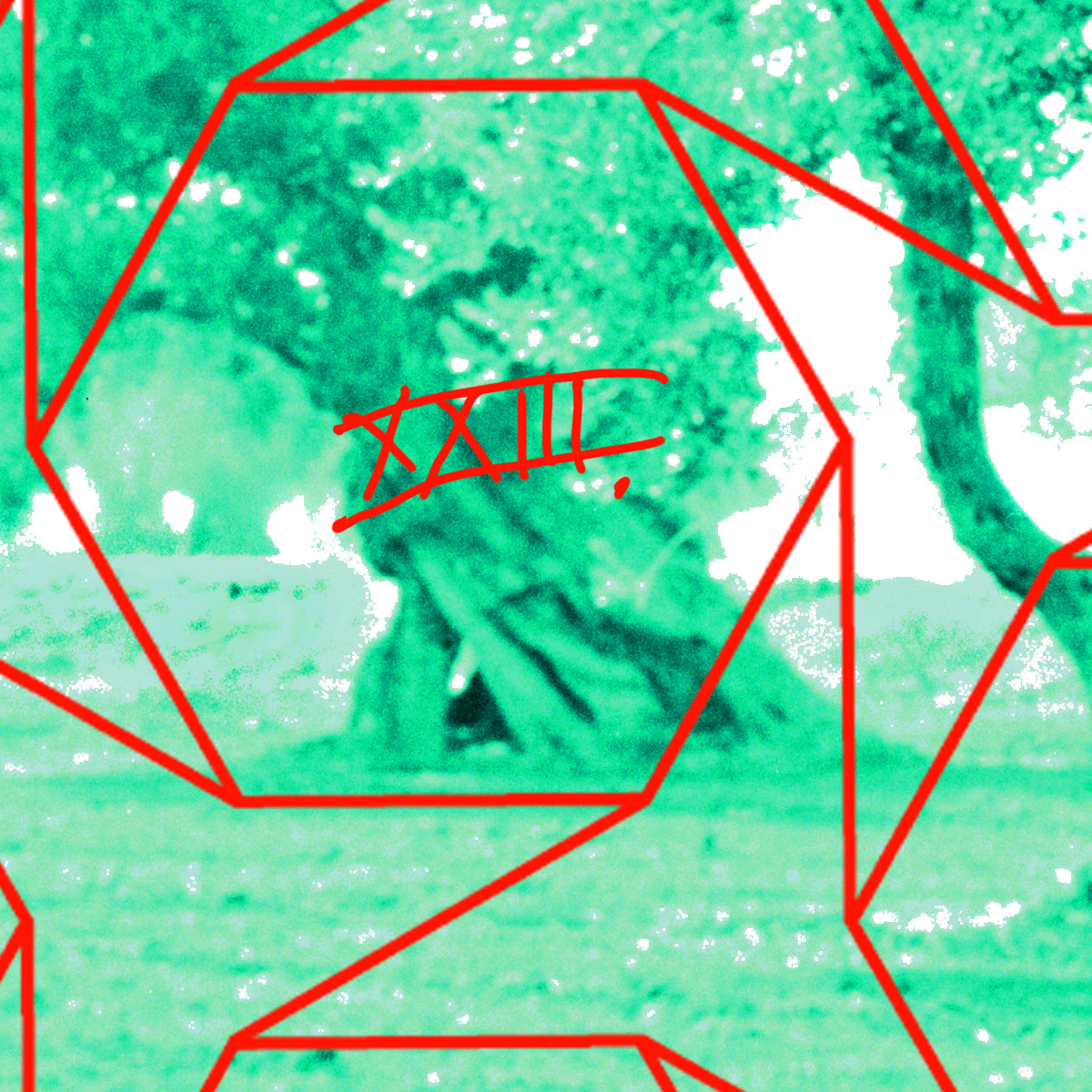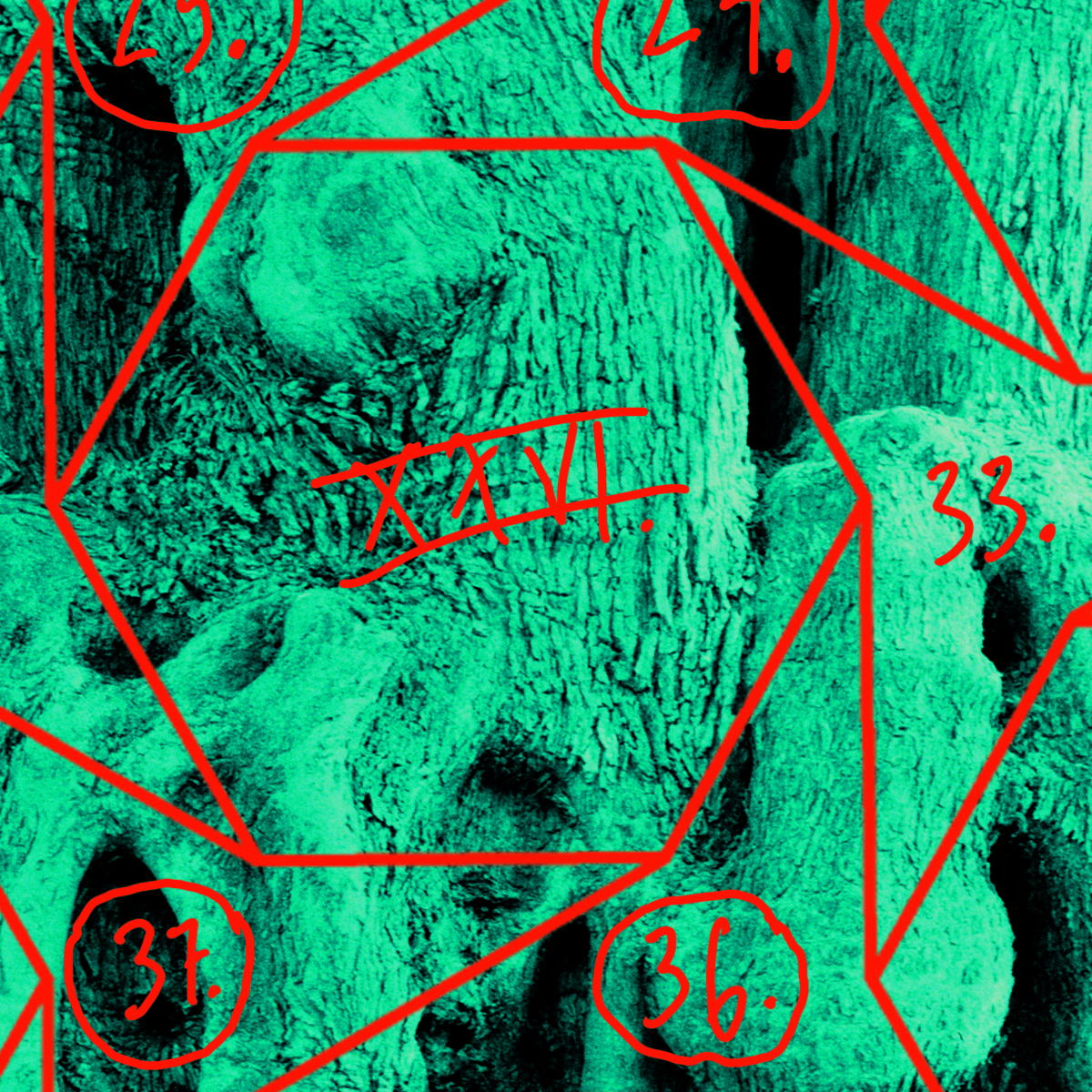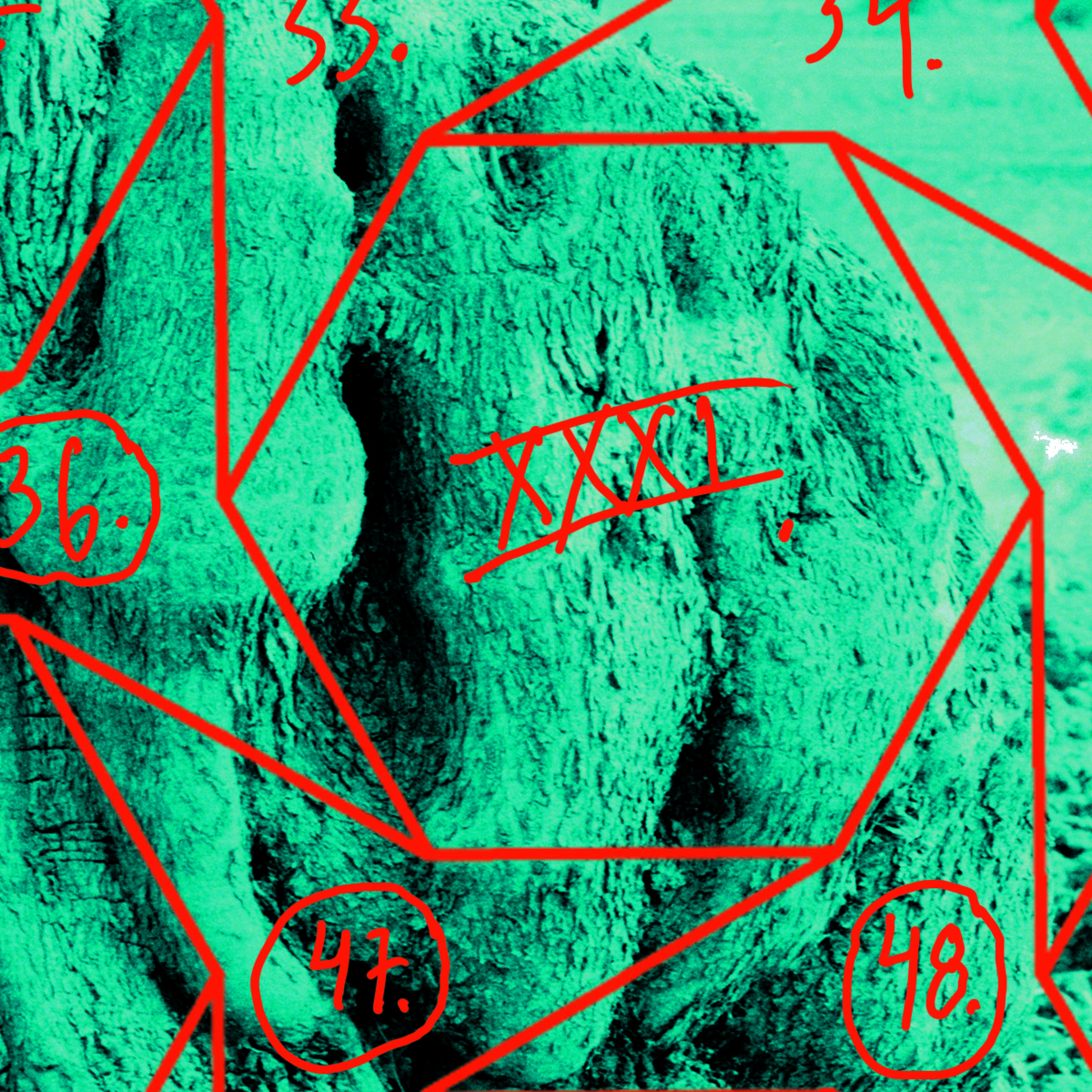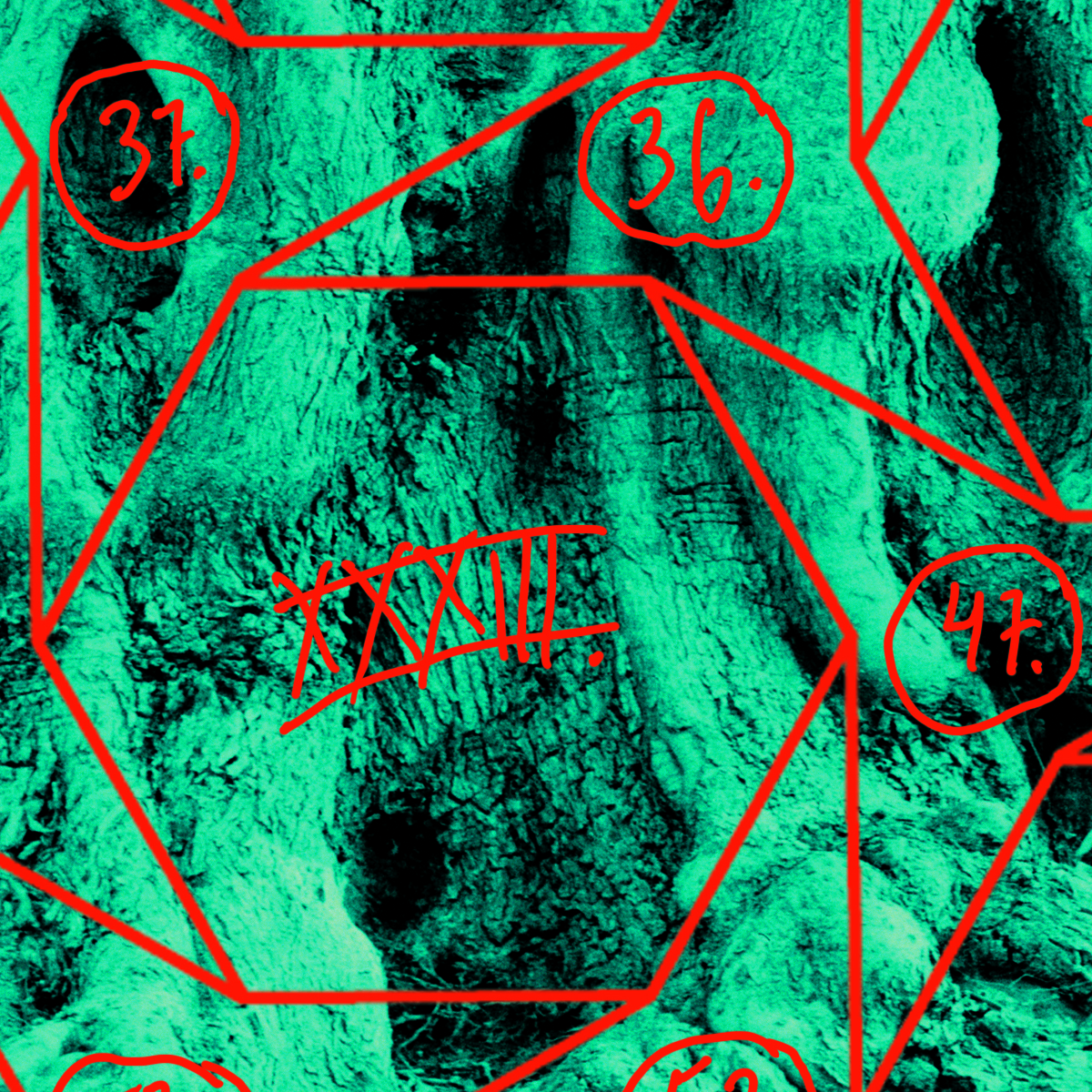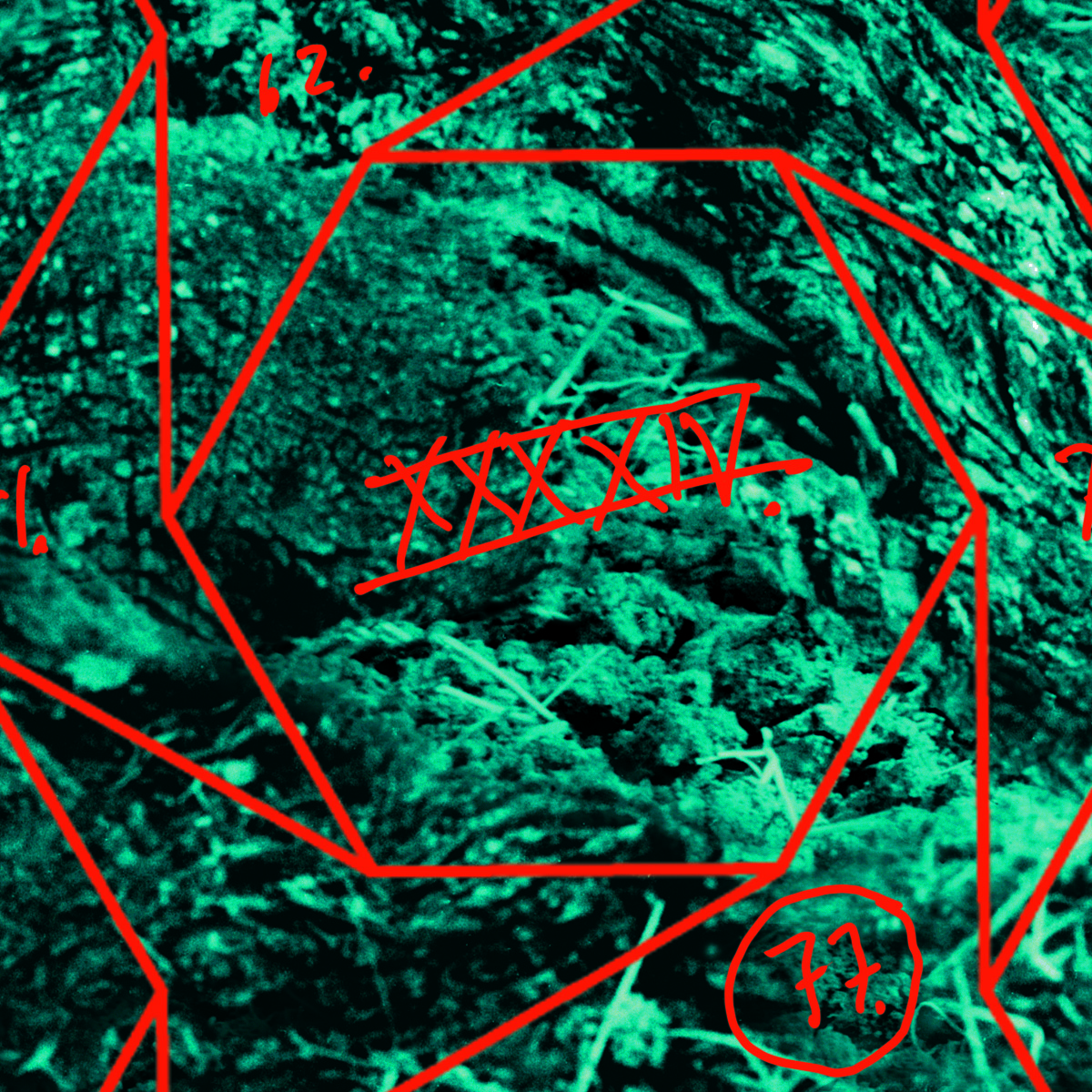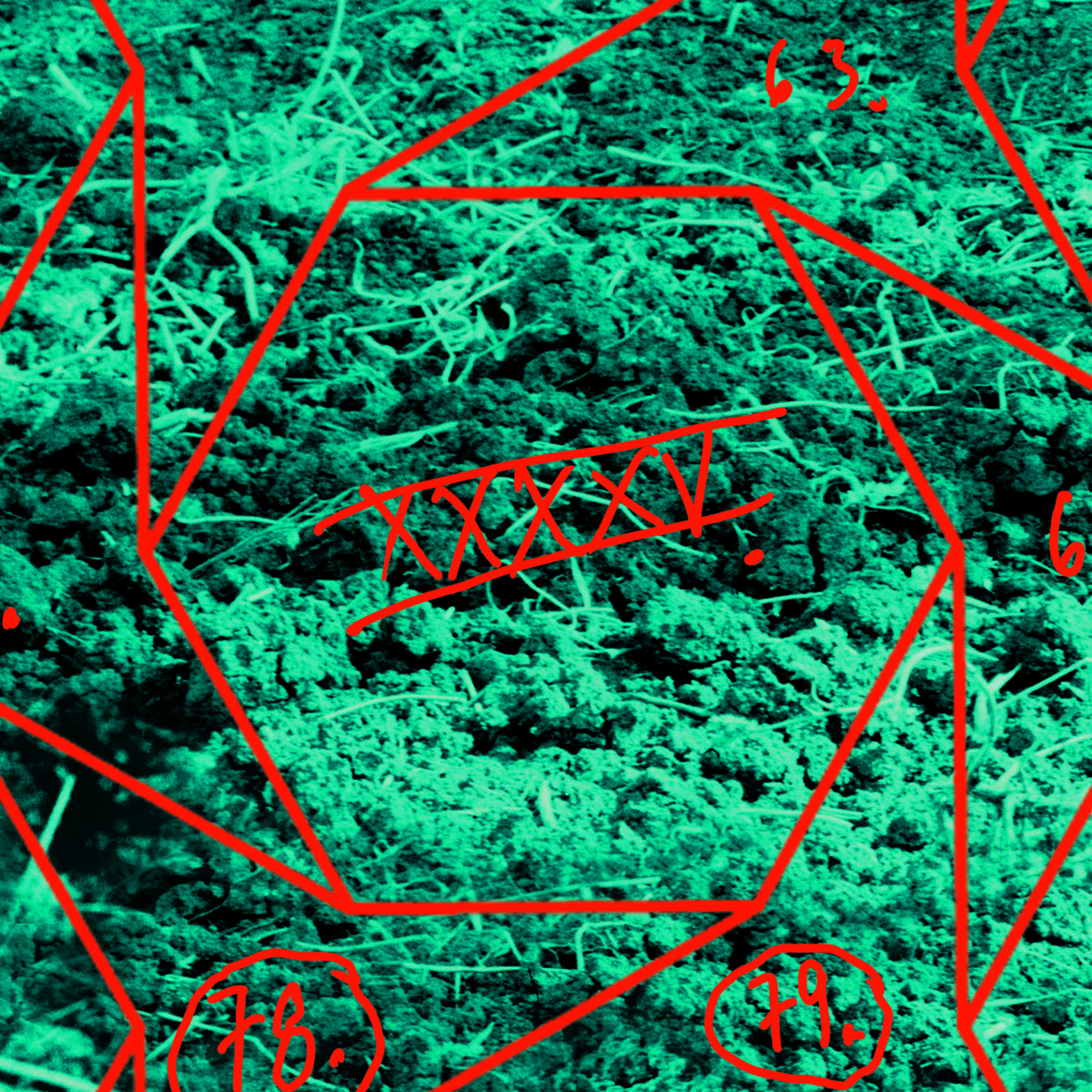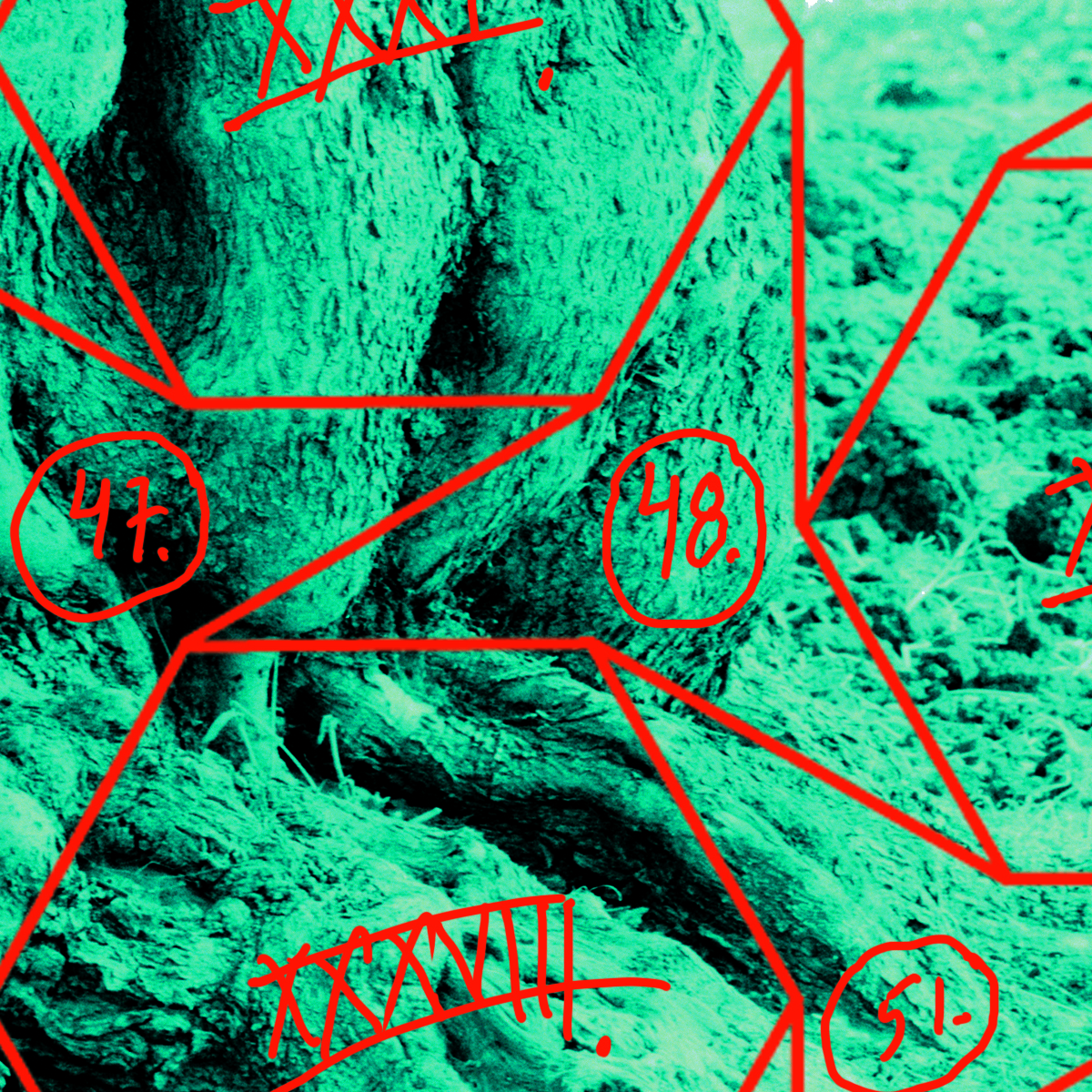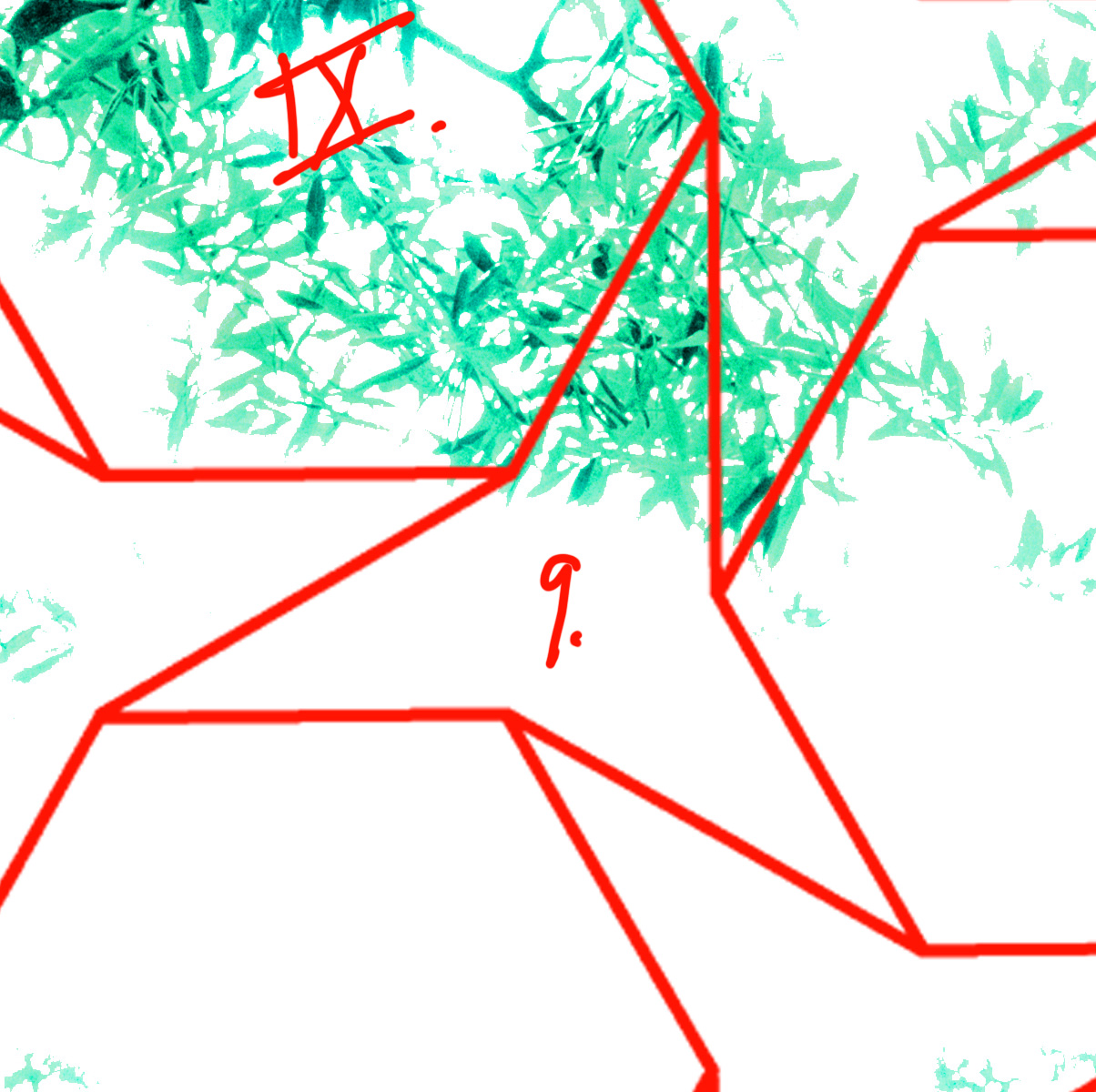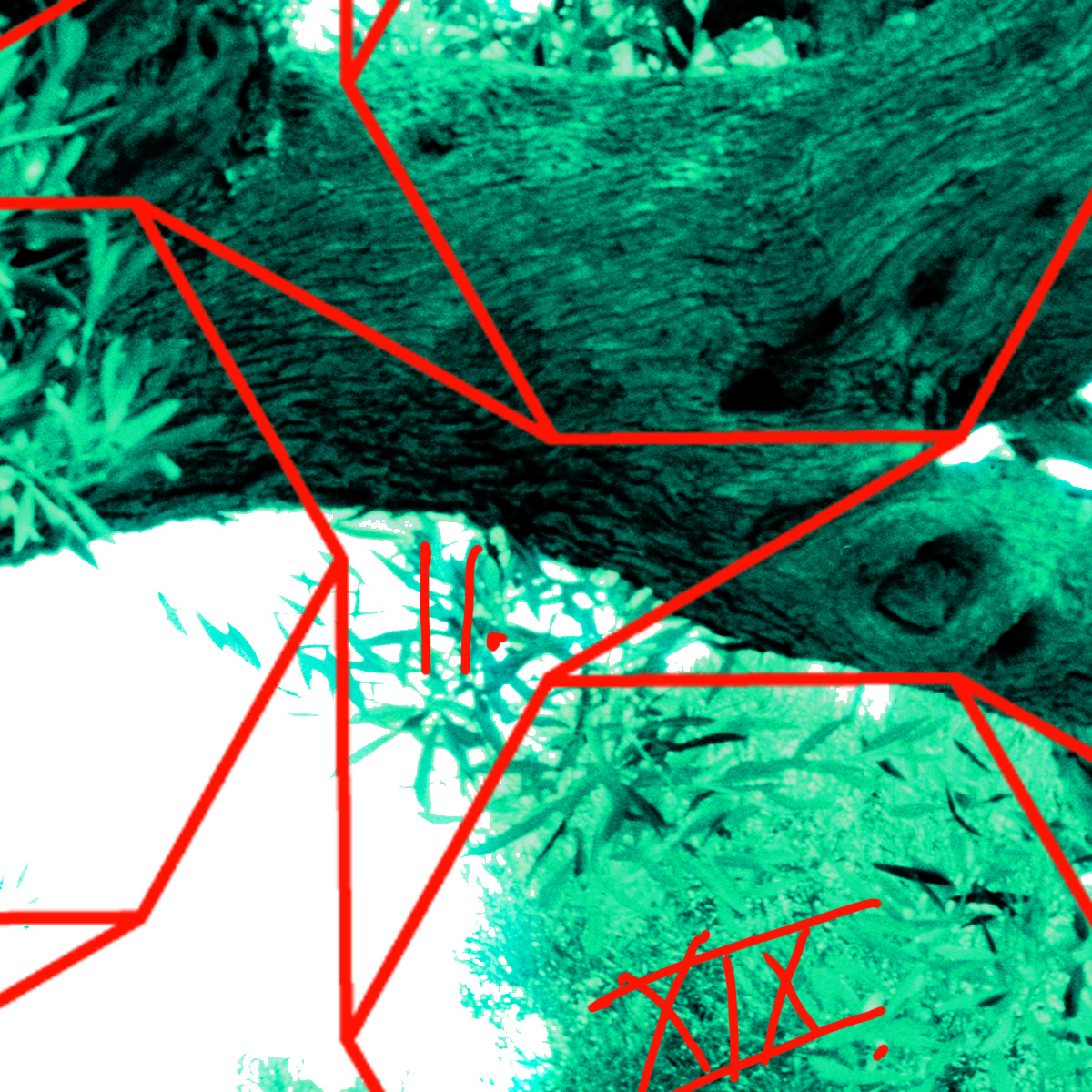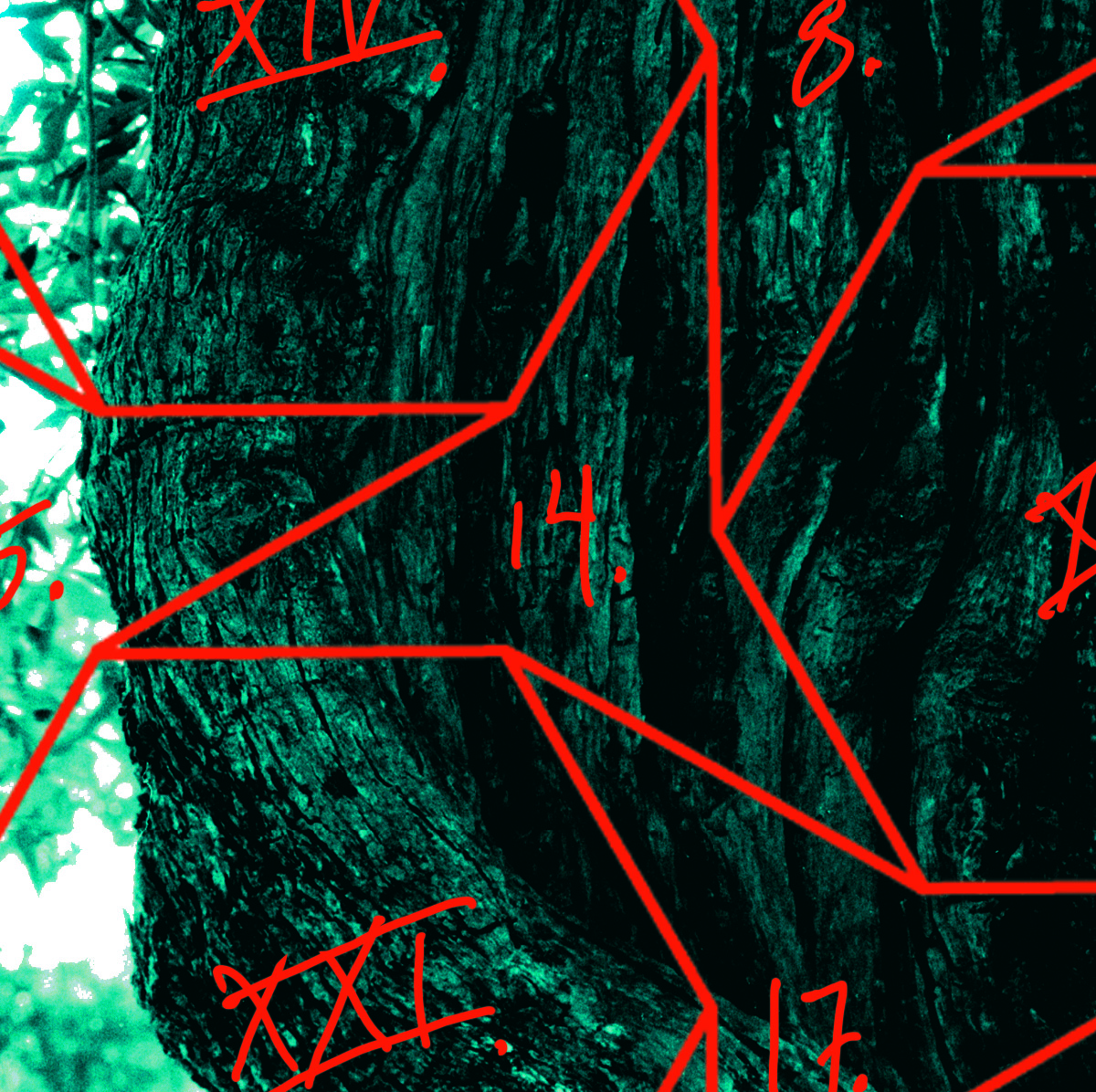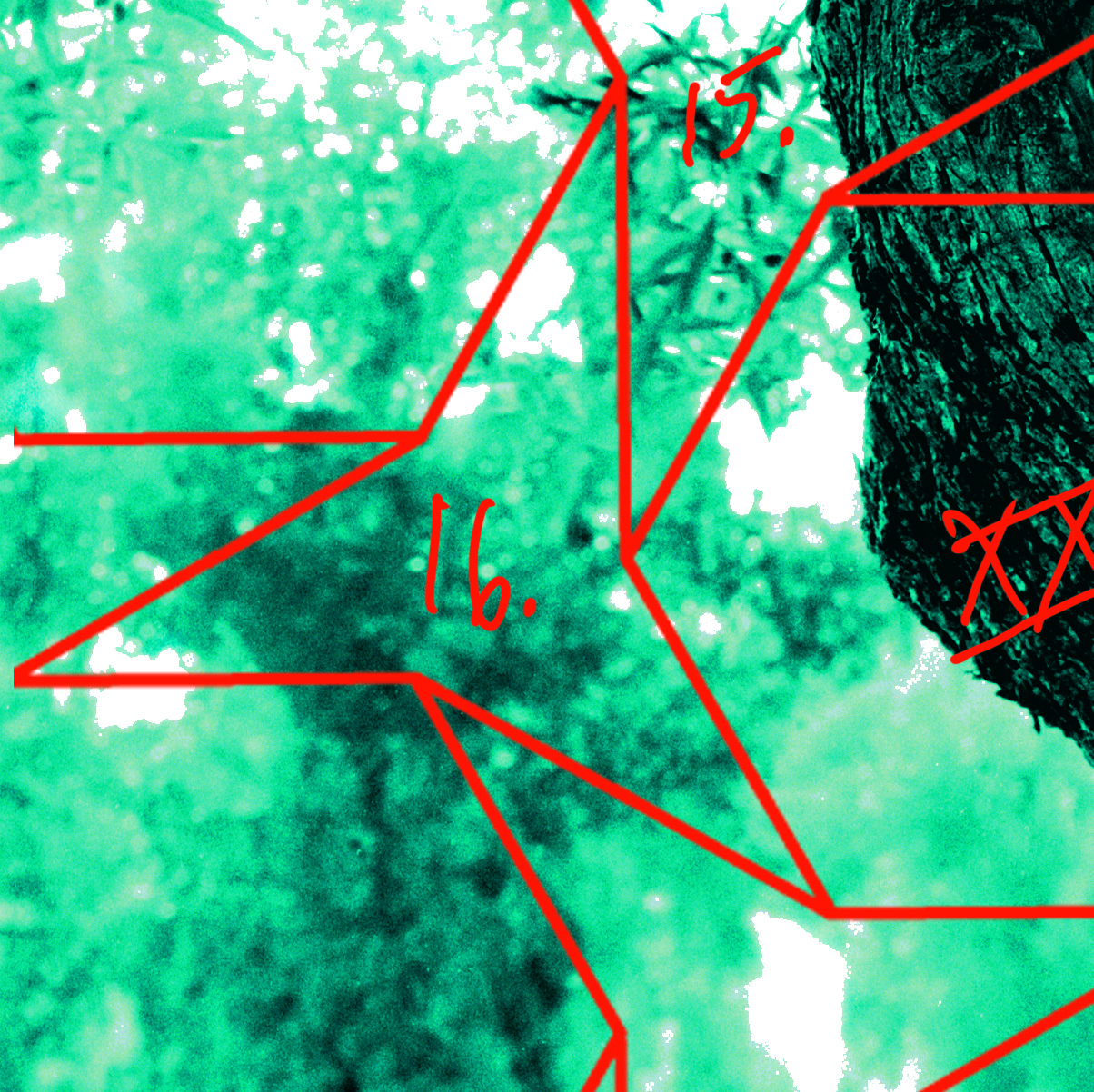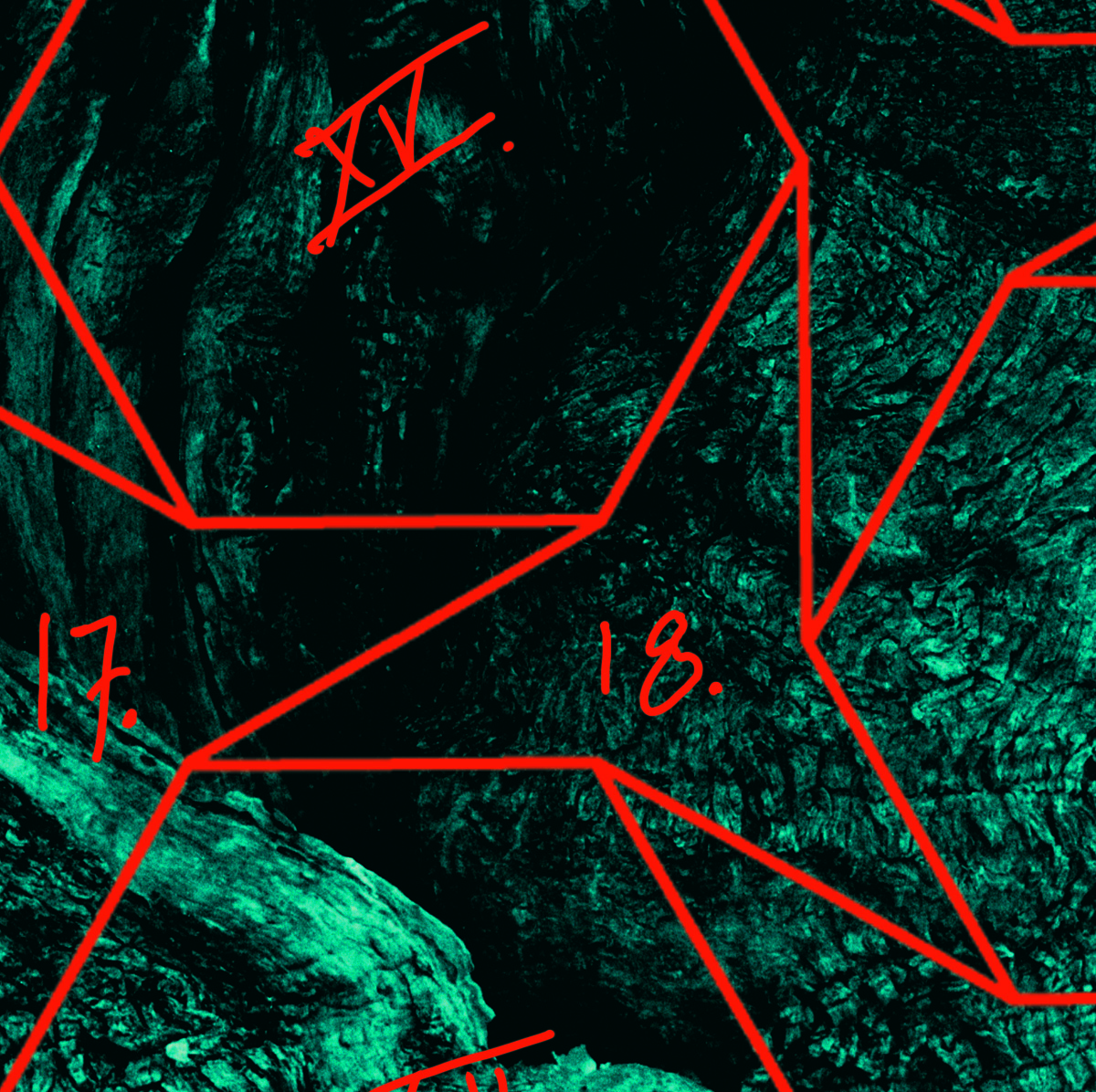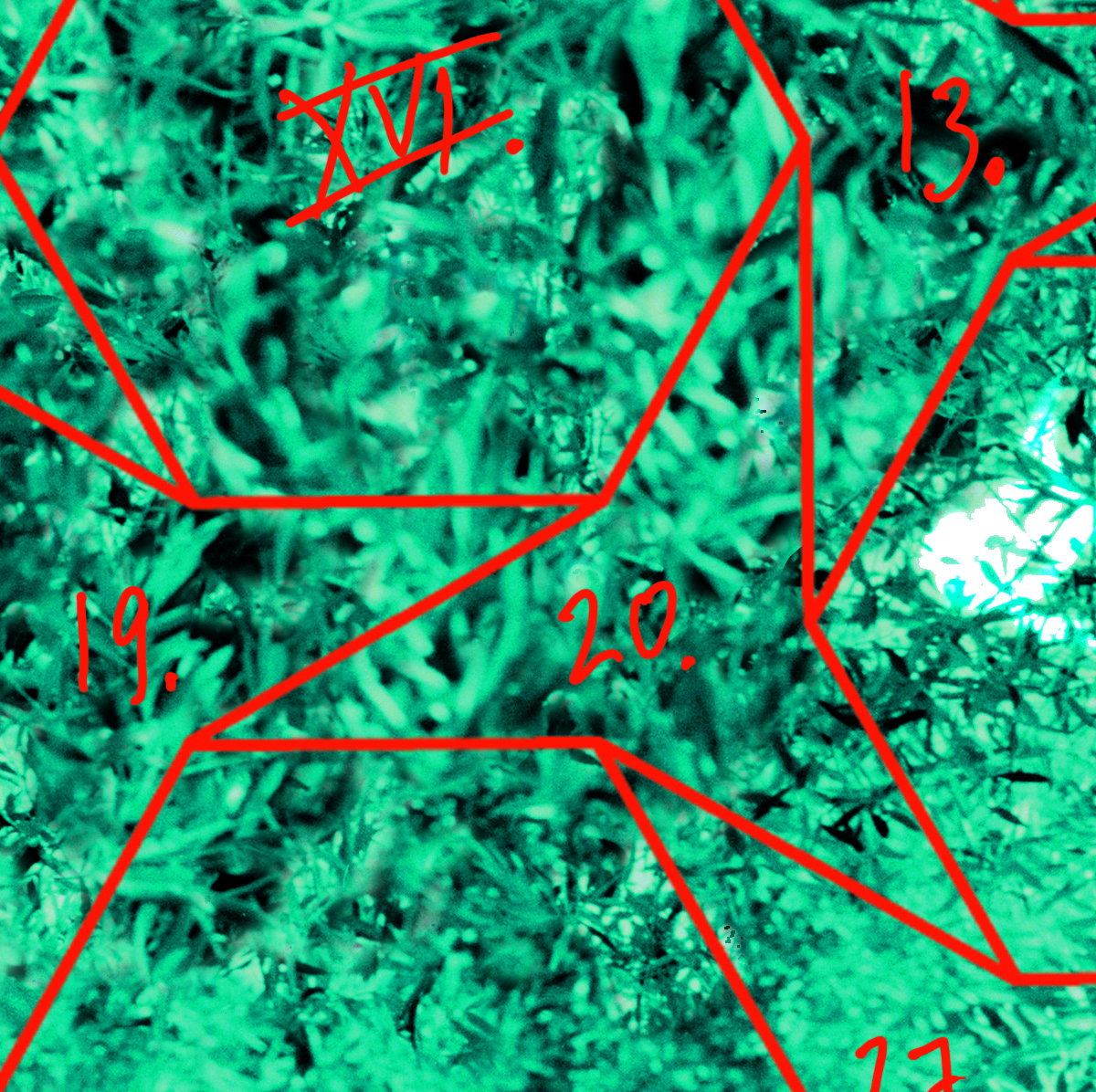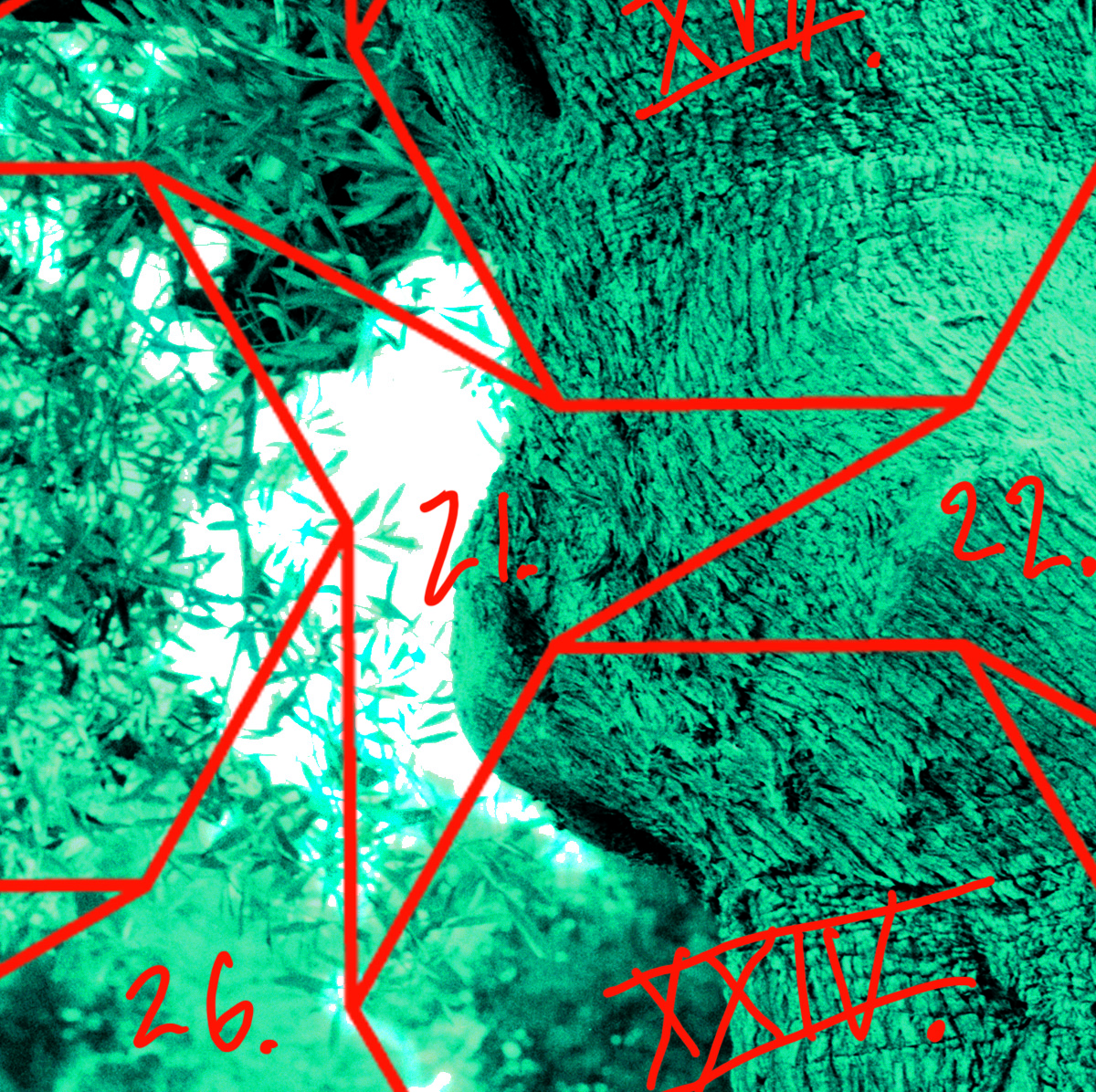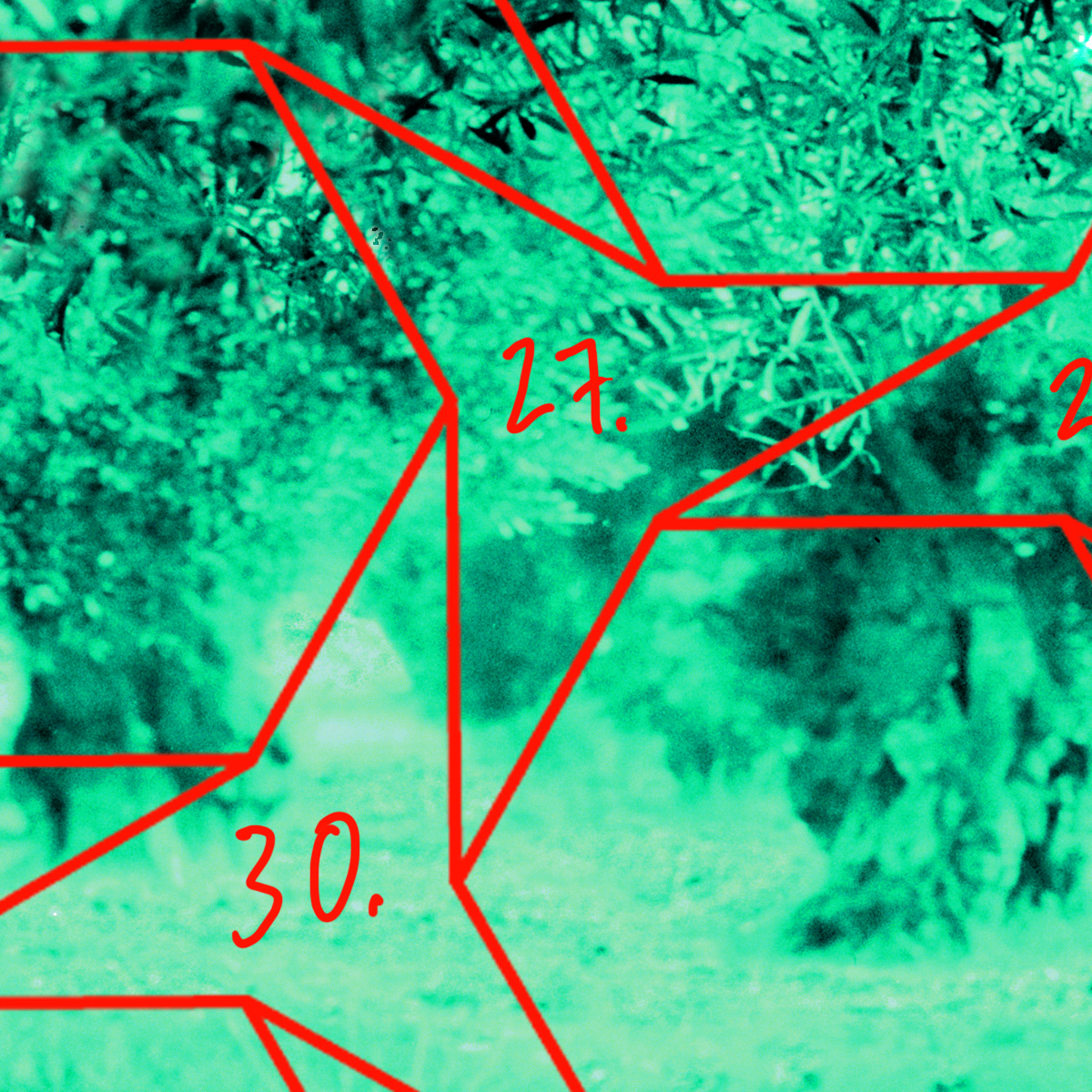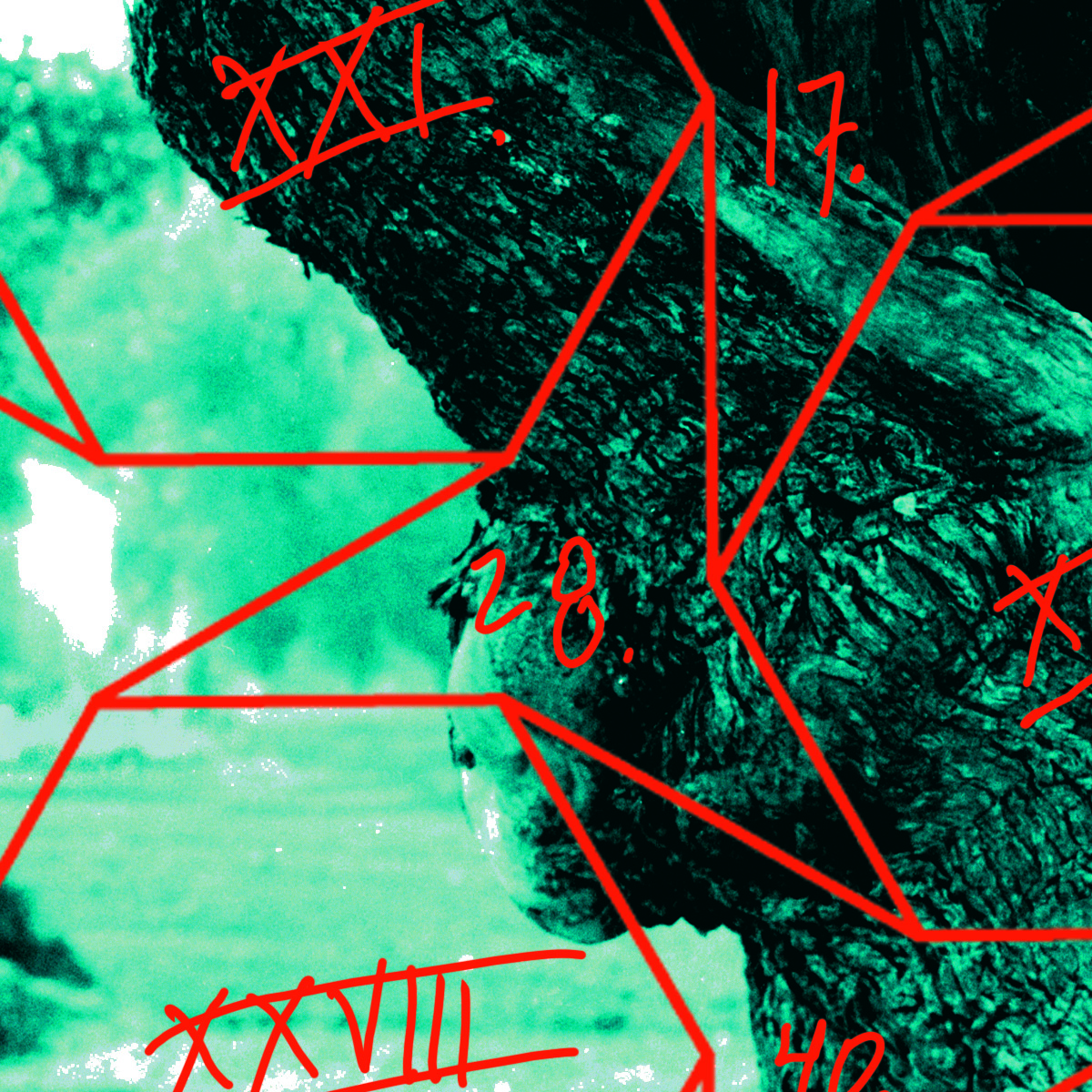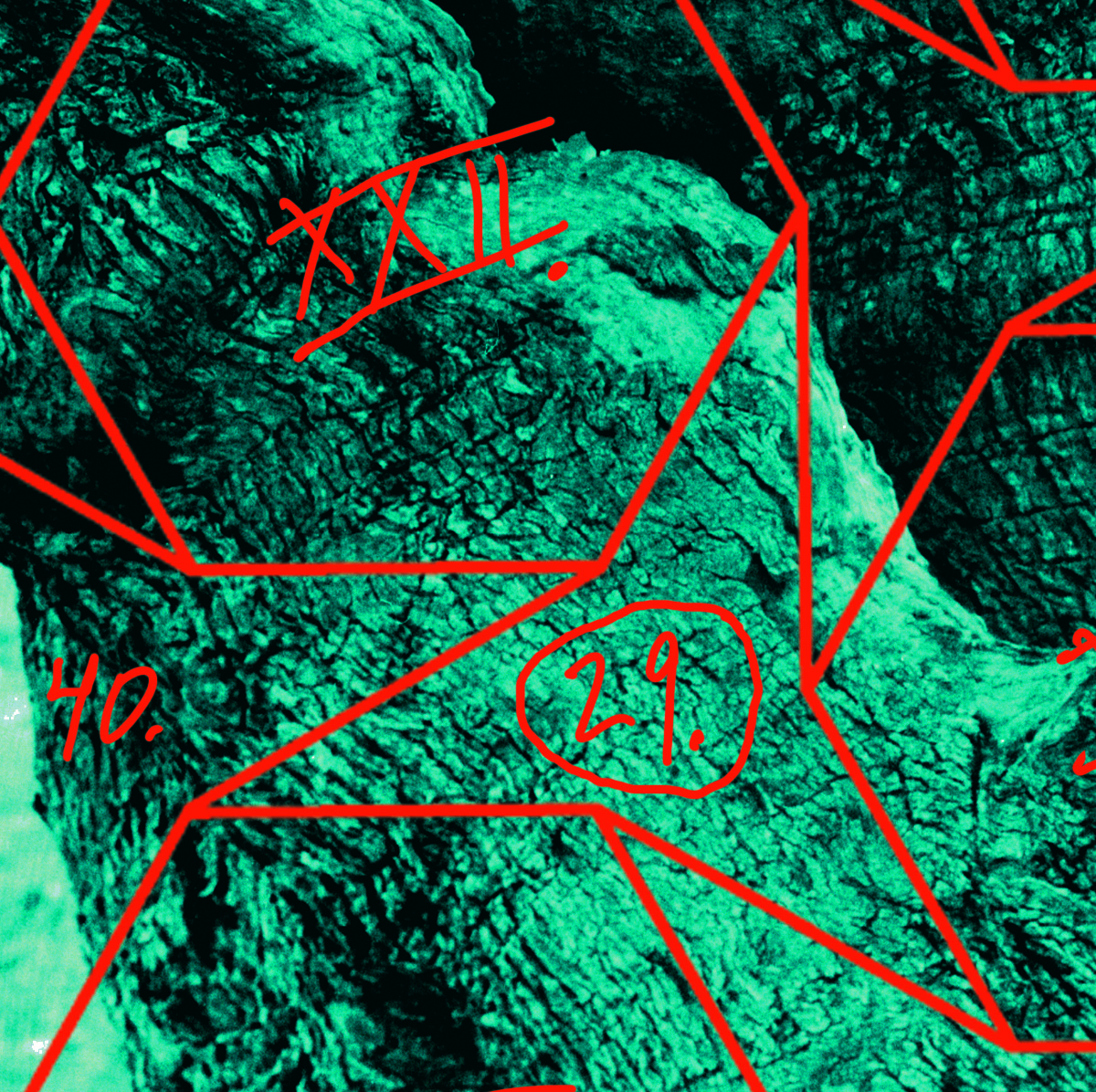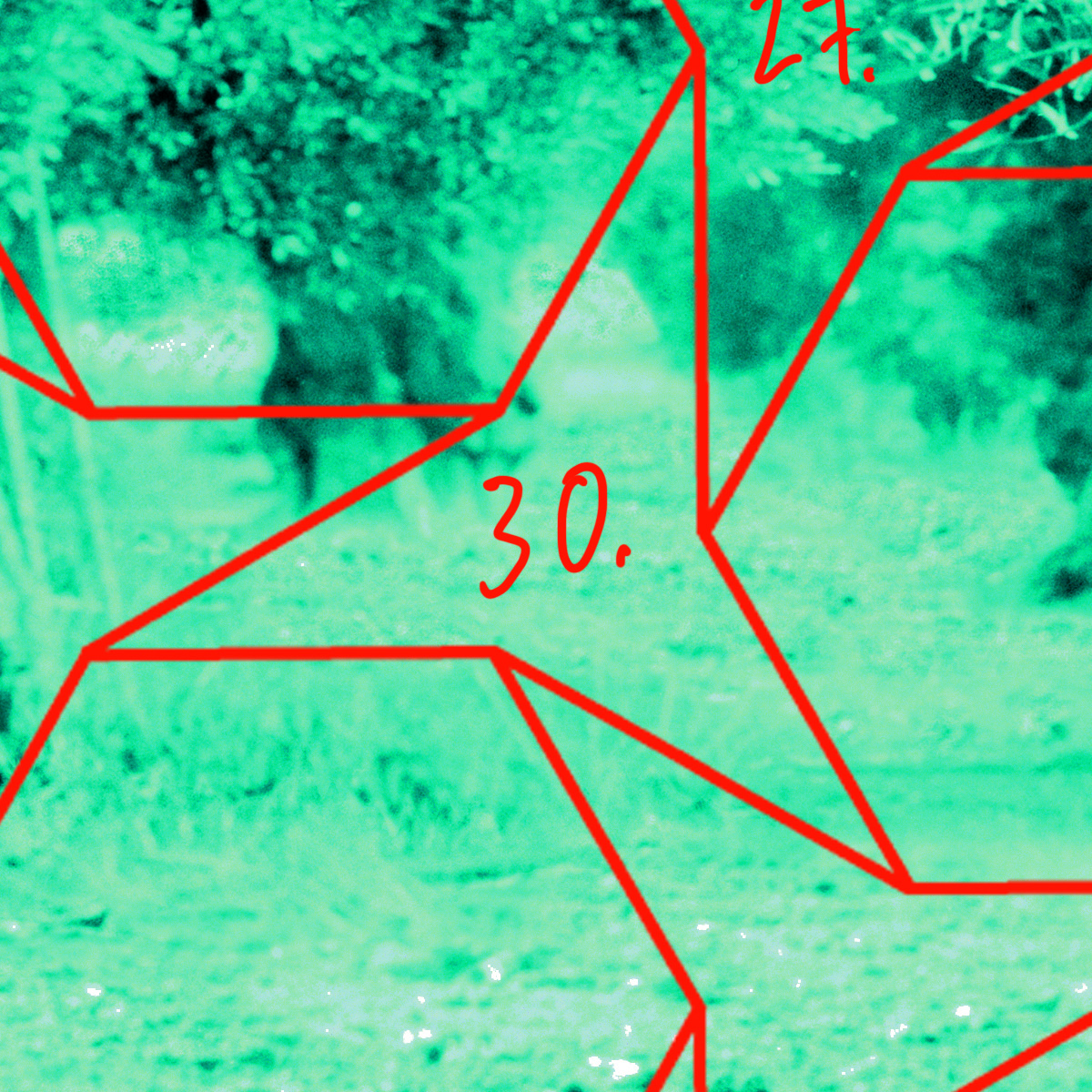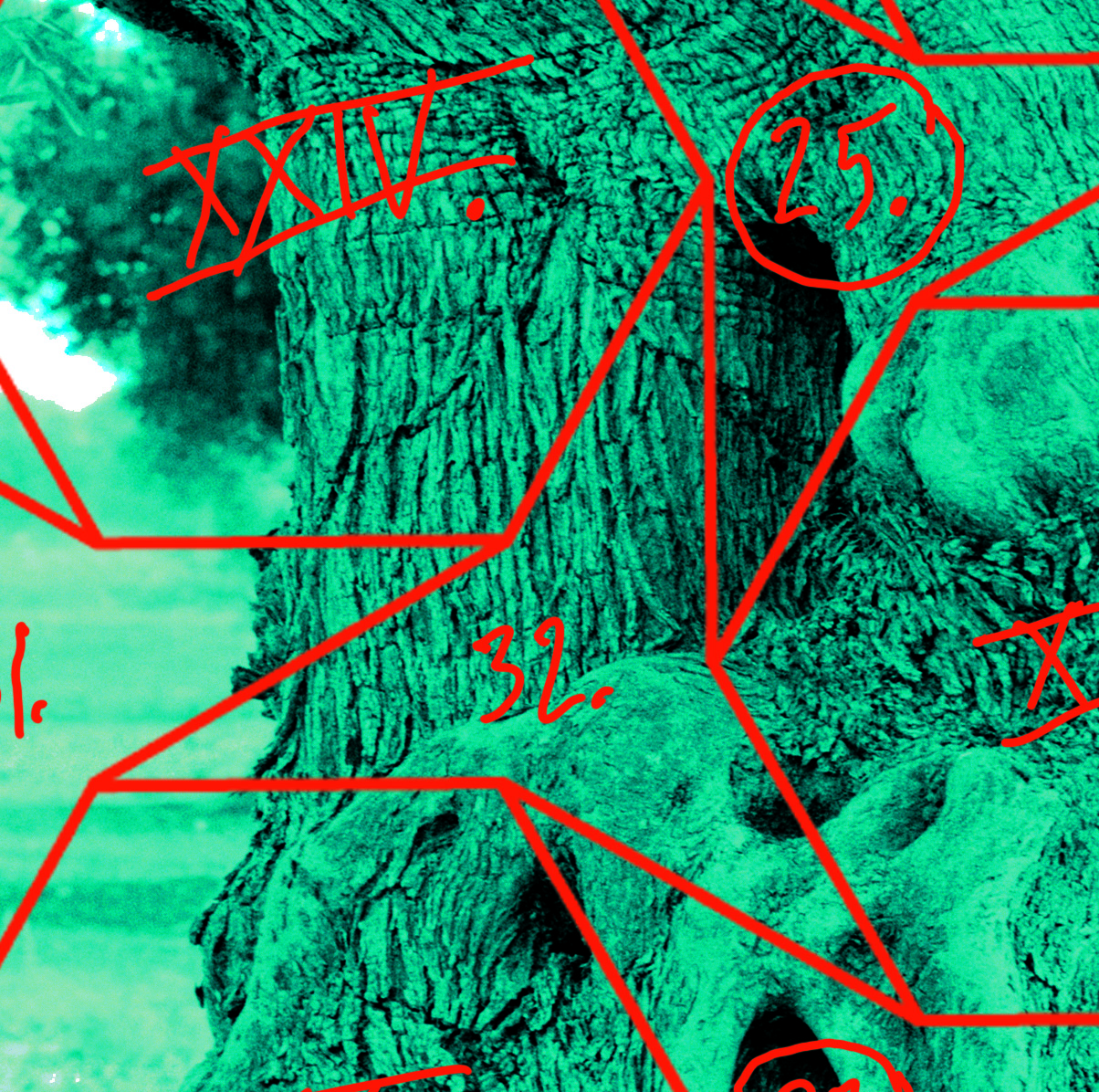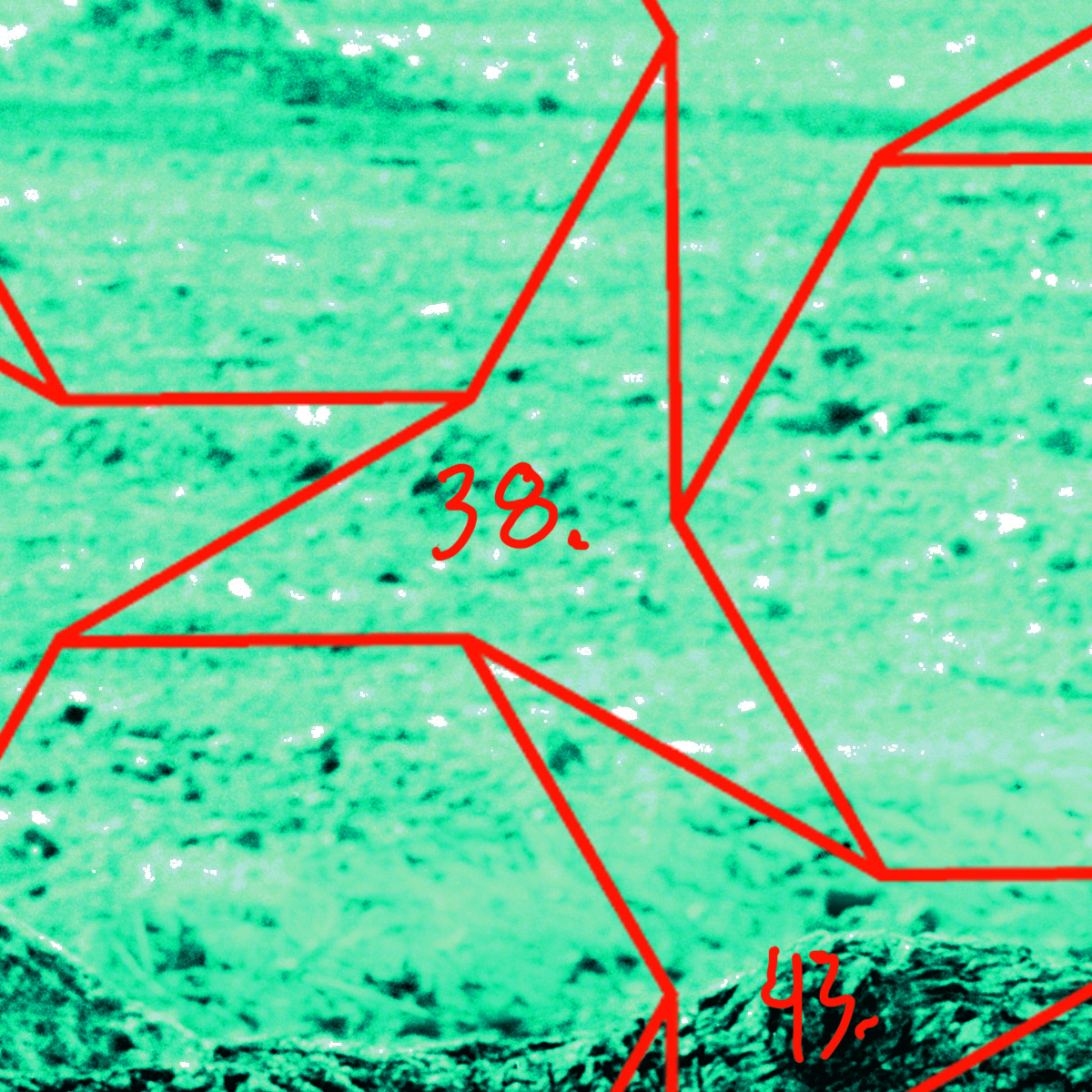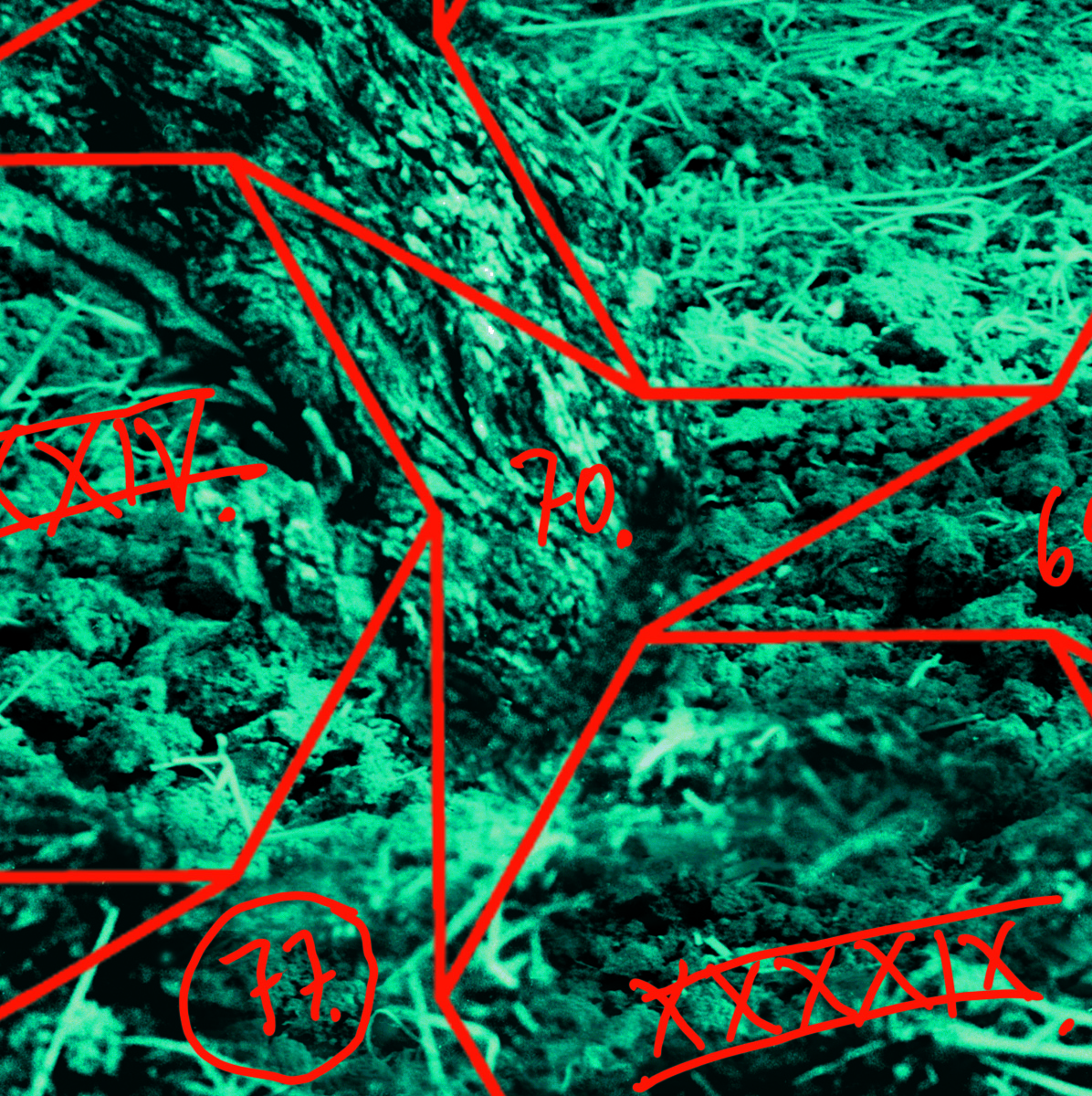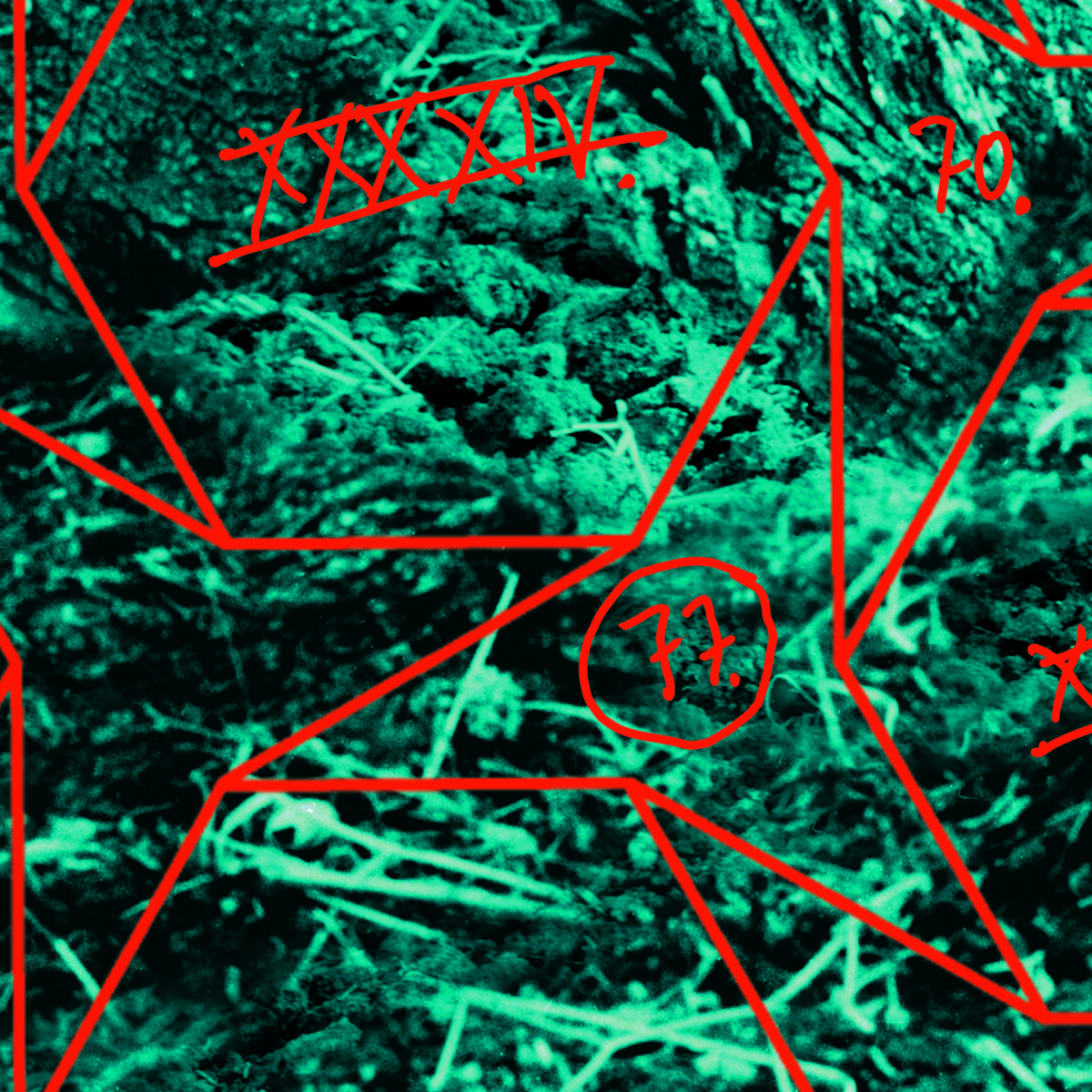PRESSED: WHEN WORDS WERE EARTH 2003-2005
The Palestinian Minister of Agriculture once stated that “Our agricultural sector has not grown since 1967… In fact, it has diminished. One of his aims was “to plant 10 million trees every year throughout the West Bank for a greener Palestine.” The olive orchard, a foundation of economic stability and a symbol of peace in the Middle East, is fragmented in the installation Pressed: When Words Were Earth, comprised of photographic murals divided into over 3,000 mirrored tiles. Its fractured sections and the prints that accompany them allude to the deliberate diminishment of agricultural productivity, to the uprooting of livelihoods, to groves demolished or made inaccessible by walls and bypass roads and settlements. Its numbering system refers to the placement ordering of the tiles themselves but also speaks to the systematic disruption and disregard for the cultivation of trees that are sometimes over a century old, not to mention the people that they sustain.
The individual prints are based on the shape of tiles derived from a diagram that was used to cut and print the mirrored mylar tiles that created a wall-sized mural. Numbering each tile to keep them in order revealed itself as process – a process that, in a sense, echoed the methodical cutting up the land, seizing it, occupying it and sometimes destroying it.
The title of Pressed: When Words Were Earth was inspired by by Mahmoud Darwish’s poem “Psalm Three,” translated by Ben Bennani:
On the day when my words were earth
I was a friend to stalks of wheat.
On the day when my words were wrath
I was a friend to chains.
On the day when my words were stones
I was a friend to streams.
On the day when my words were a rebellion
I was a friend to earthquakes.
On the day when my words were bitter apples
I was a friend to the optimist.
But when my words became honey
Flies covered my lips!
Pressed: When Words Were Earth plays on the adjacency of Mosque/ Mosquito and in the psychologically sloppy terrain of swamps and drains that reign and rain. The urgency and suppression inherent in the etymology of pressed is clearly stated by the former head of Israeli military intelligence and leading Arabist Yehoshaphat Harkabi.
Twenty years ago, Harkabi alluded to ‘the solution’ currently sought by Israel’s confiscation of water and land: "When the swamp disappears, there will be no more mosquitoes". The soundtrack is composed of forced air and a vibrating tongue pressed against clenched teeth. The frequencies of the wavering, buzzing noises were raised and lowered to evoke the mosquito, bulldozer and wind, alternate interpretations emanating from a single sound source of playful imitation, torment or desperation. The mosquito flies and propagates freely on either side of “the fence”, unencumbered by “the apartheid wall”, drawn as it is to excesses of stilled water, tear-drenched soil or blood let.
She (Queen of Sheba, Bilqis) was invited to enter the court (al-.sar.h). When she saw it, she took it for a sheet of water, and uncovered her legs. Solomon told her: ‘This is a court paved with tiles of glass.’
‘O Lord,’ she said, ‘I have wronged myself, and I submit to the
Lord of all the worlds with Solomon.’
(Sura al-Naml, Qur˙’an 27:44)
Medieval Islamic aesthetics, whether constructing conceptions of beauty in relation to the ontological, religious and ethical, or probing more autonomous physiological external and internal models of perception, grappled with issues of splendor, interpretation and distinction. Pressed: When Words Were Earth implicates the visitor in the myriad lenses and filters that fluctuate between representation and abstraction, and that confuse an element for an image, an image for a world view, a way of seeing for multiple perspectives.
“The exact meaning of the term ‘.sar.’ raises problems. Neither the parable, nor the exegesis that proposes various linguistic interpretations (such as from Tha’labi, ‘Ara’is al-majalis), allows us to set a firm structural determination of the object in terms of two- or three-dimensionality. It could refer equally to a palace, a tower, or a room, or to a simple floor or courtyard” --Beauty and Islam: Aesthetics in Islamic Art and Architecture, Valérie Gonzalez.
In the gallery space we are, like the Queen of Sheba, caught in an environment that oscillates between the credible and fantastic, the coalescent and dissoluble, the violated and threatening. We are conscious of every step we take, careful and curious about where we tread, apprehensive on the threshold of comprehension and fearful of losing the forest and the trees.
Pressed: When Words Were Earth premiered at Chatham College in Pittsburgh in 2003 and subsequently traveled to A SPACE in Toronto and the Zilkha Gallery at Wesleyan University in 2005. The original installation was designed with visual and audio elements to allow viewers to literally see themselves in the environment typically designated as "other". The work refers to US culpability in the violent actions and reactions in the West Bank and Gaza Strip, specific events of the second Intifada, Israeli defense proclamations prior to the First Intifada, and to Koranic interpretation of Hebraic Biblical texts.
I hope that one may take solace (despite over a million of centuries-old olive trees destroyed, thousands of lives lost and inestimable suffering) in the yearning in Pressed: When Words Were Earth. A yearning for twilight before, and dawn after, conflict, when the pressed may hearken to a free and freely disseminated voice of multiple peoples, and the processing of the fruits of their peace, and oils of their healing.
Pressed: When Words Were Earth was reviewed by Mary Thomas here.
